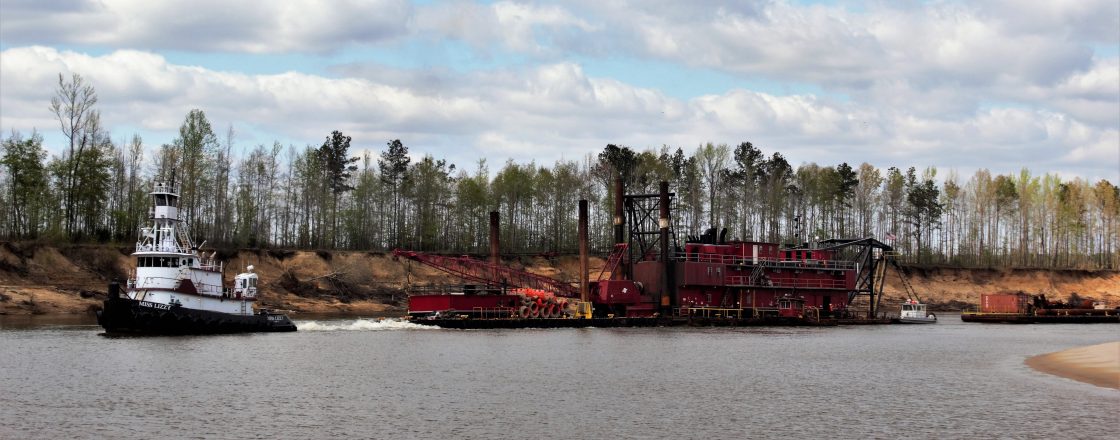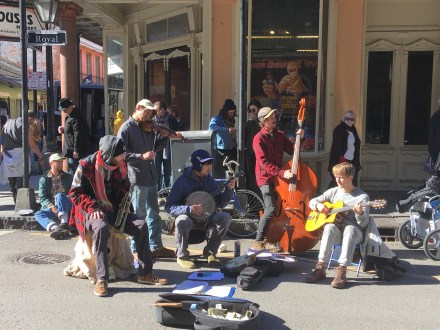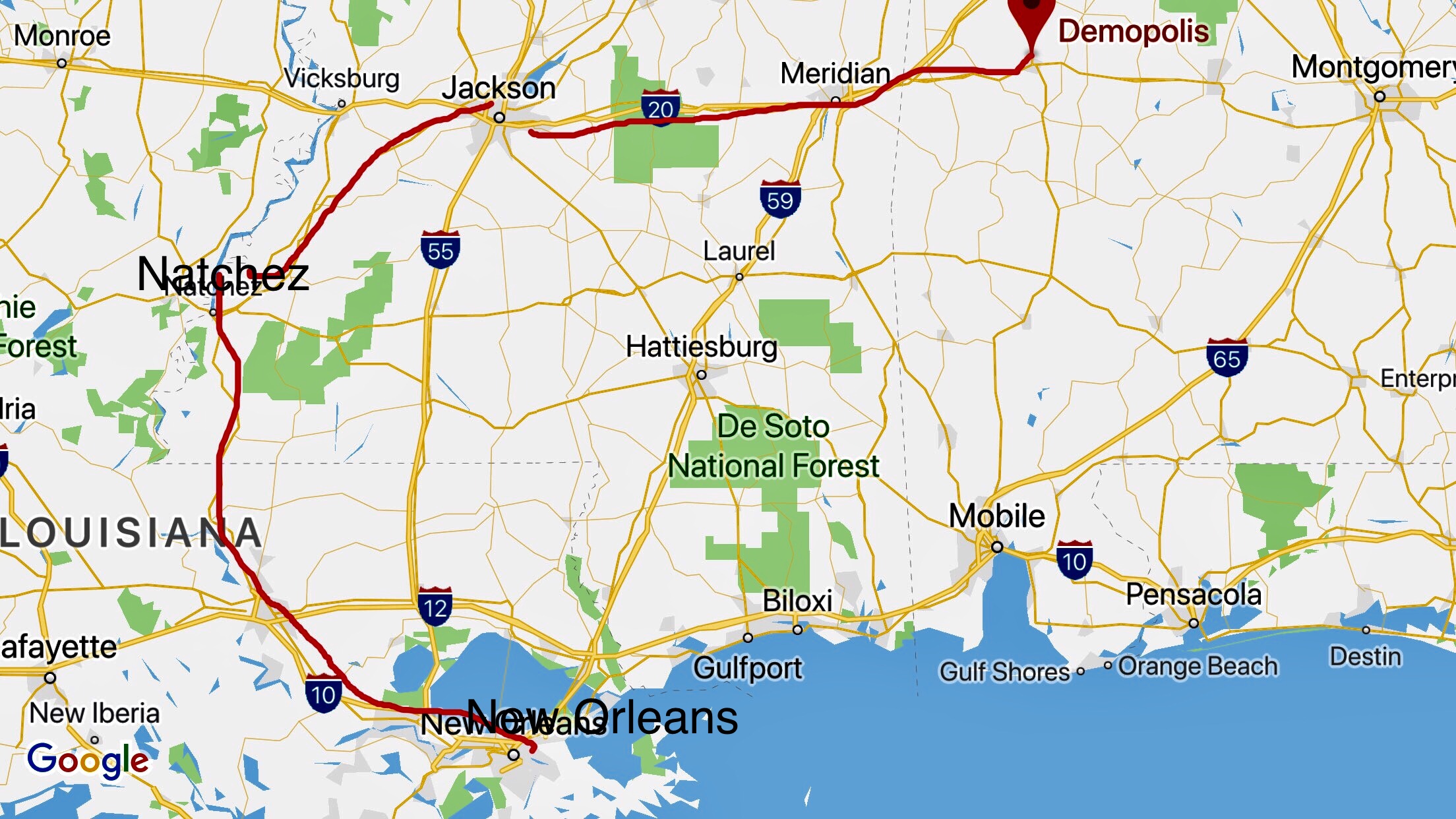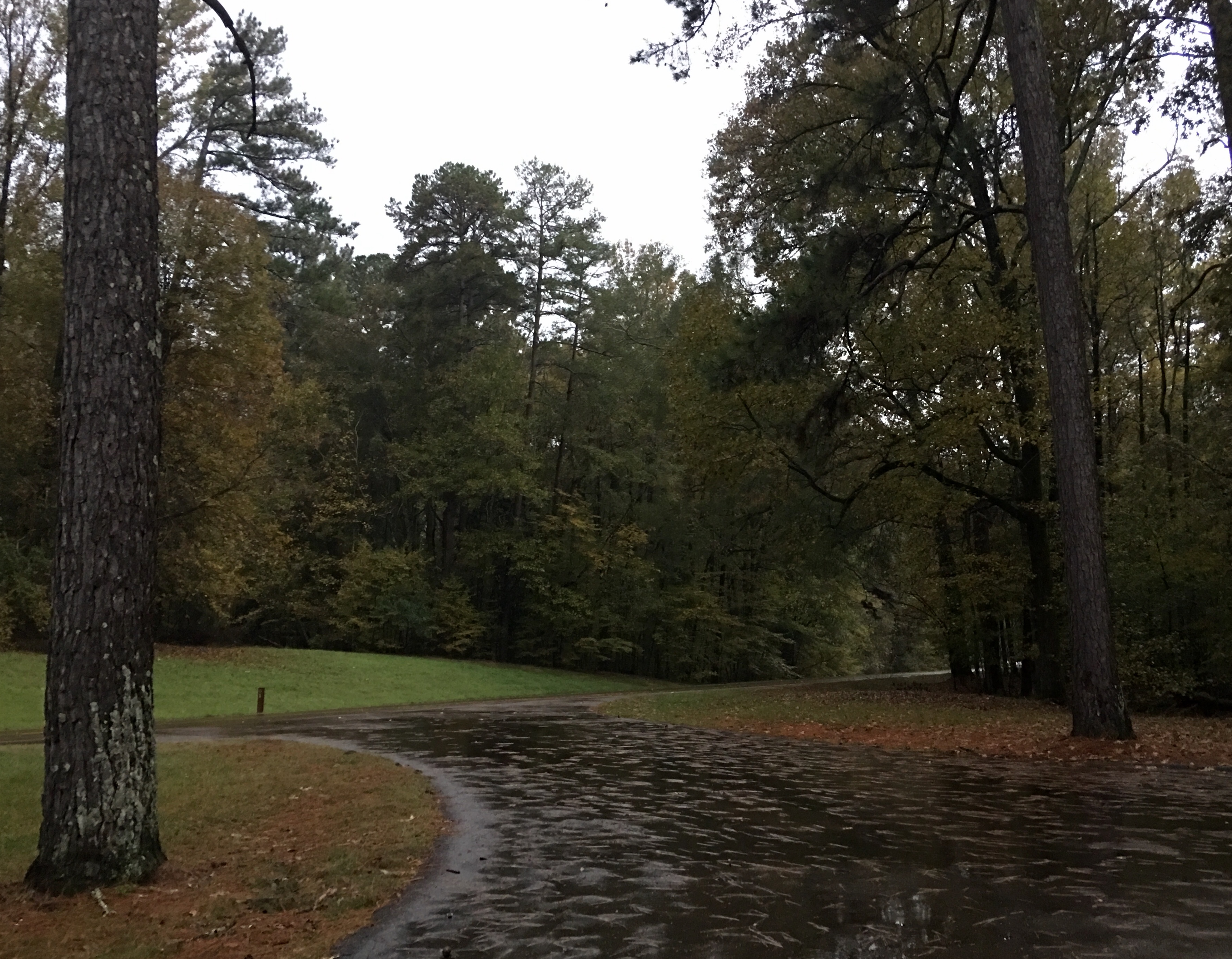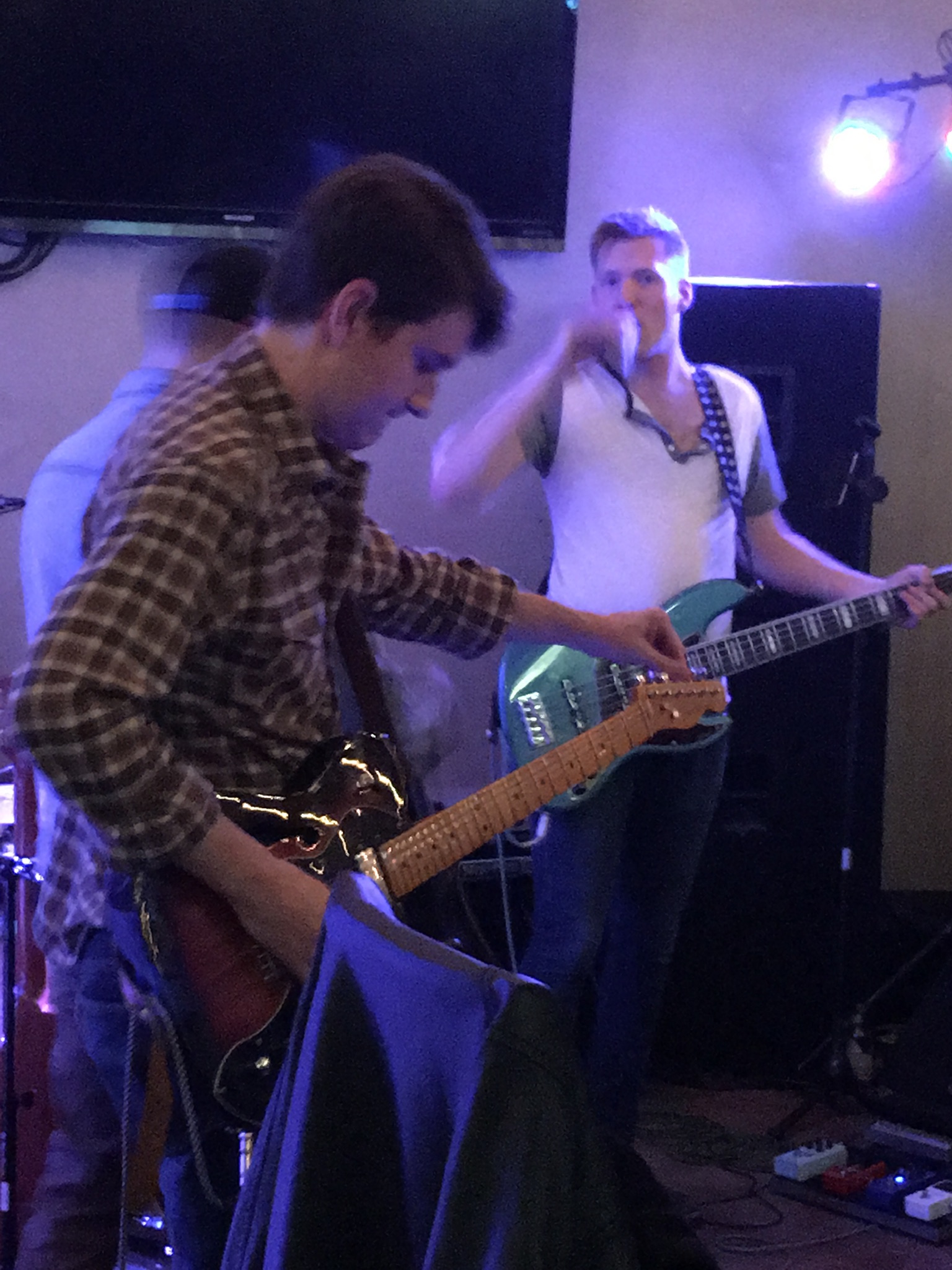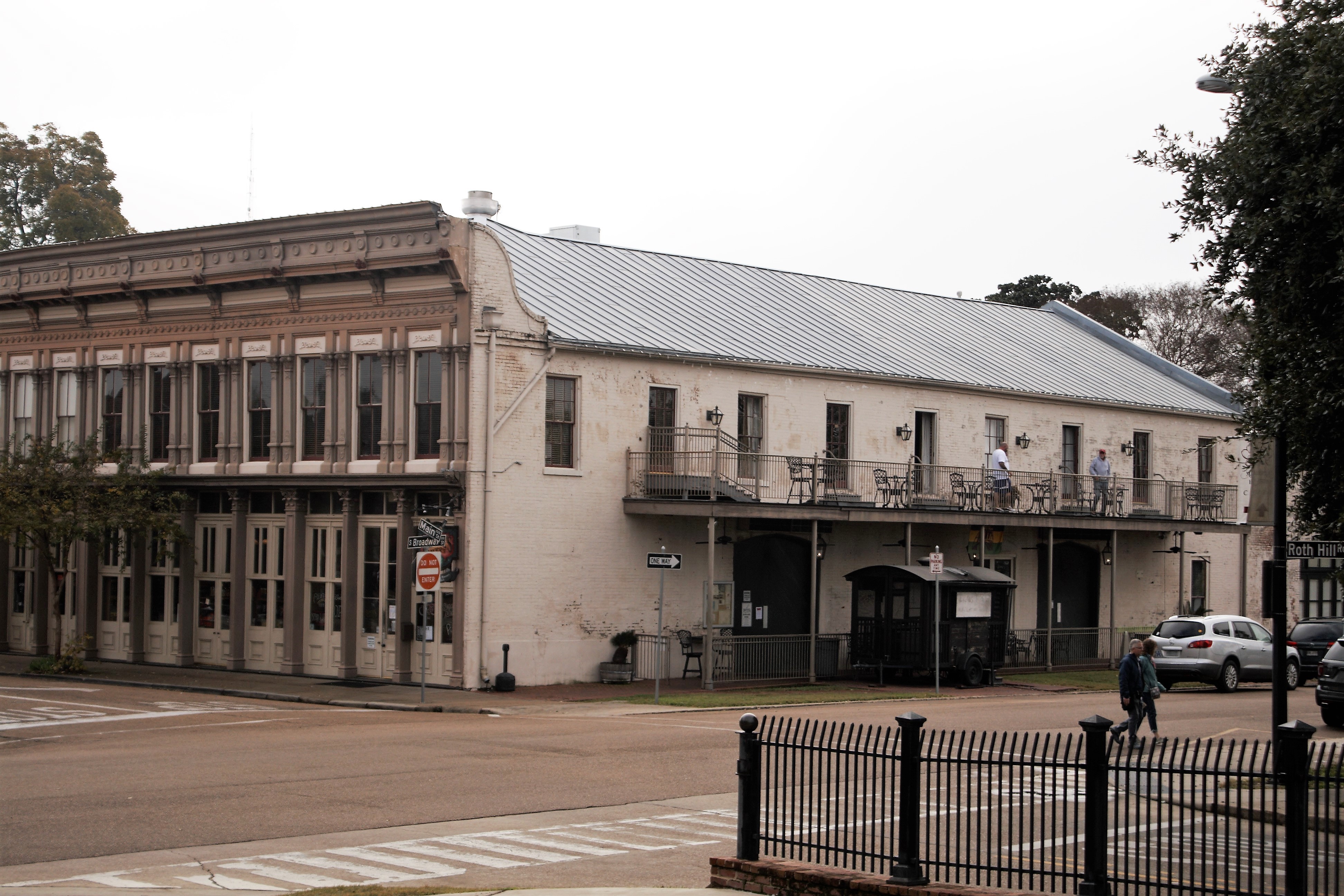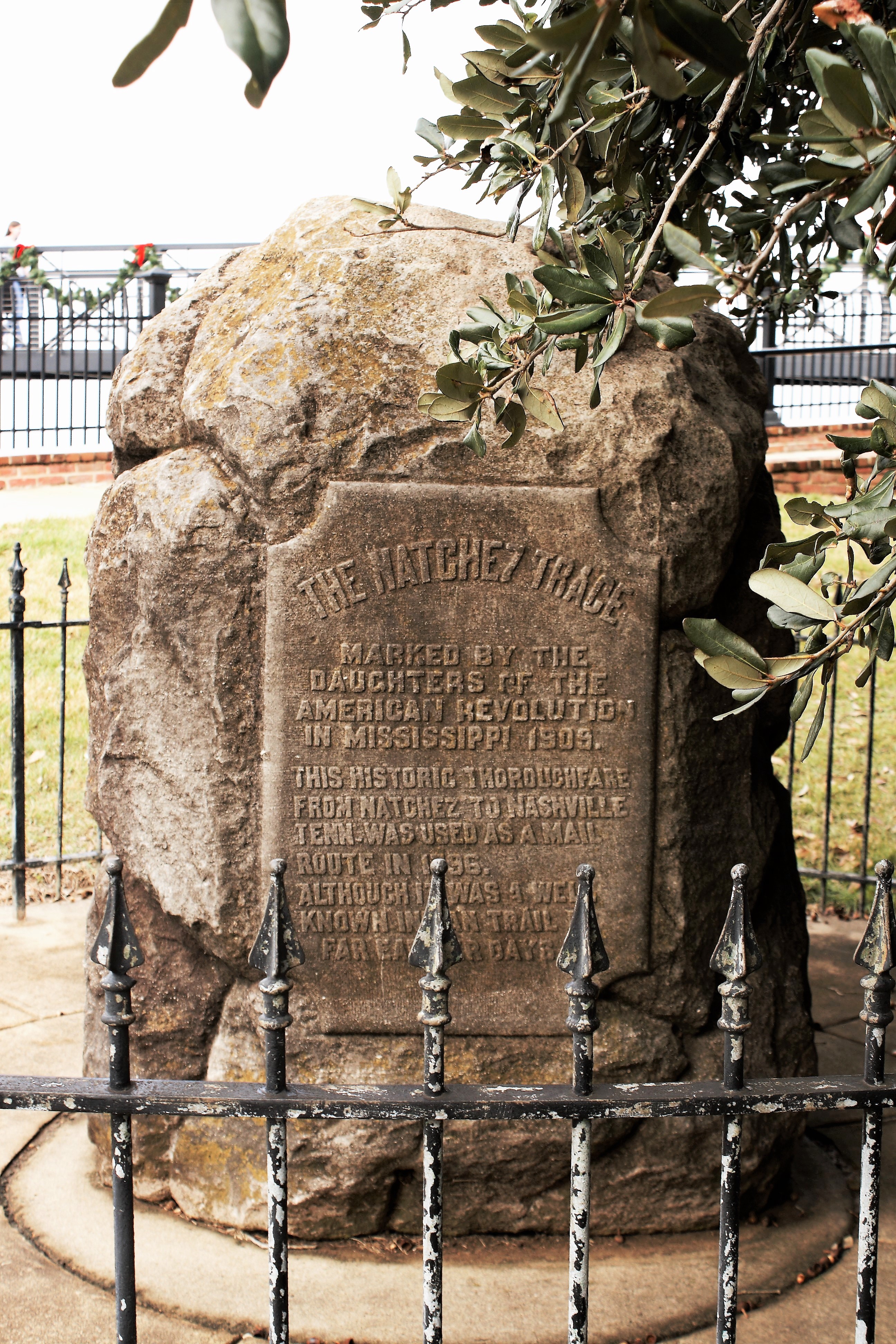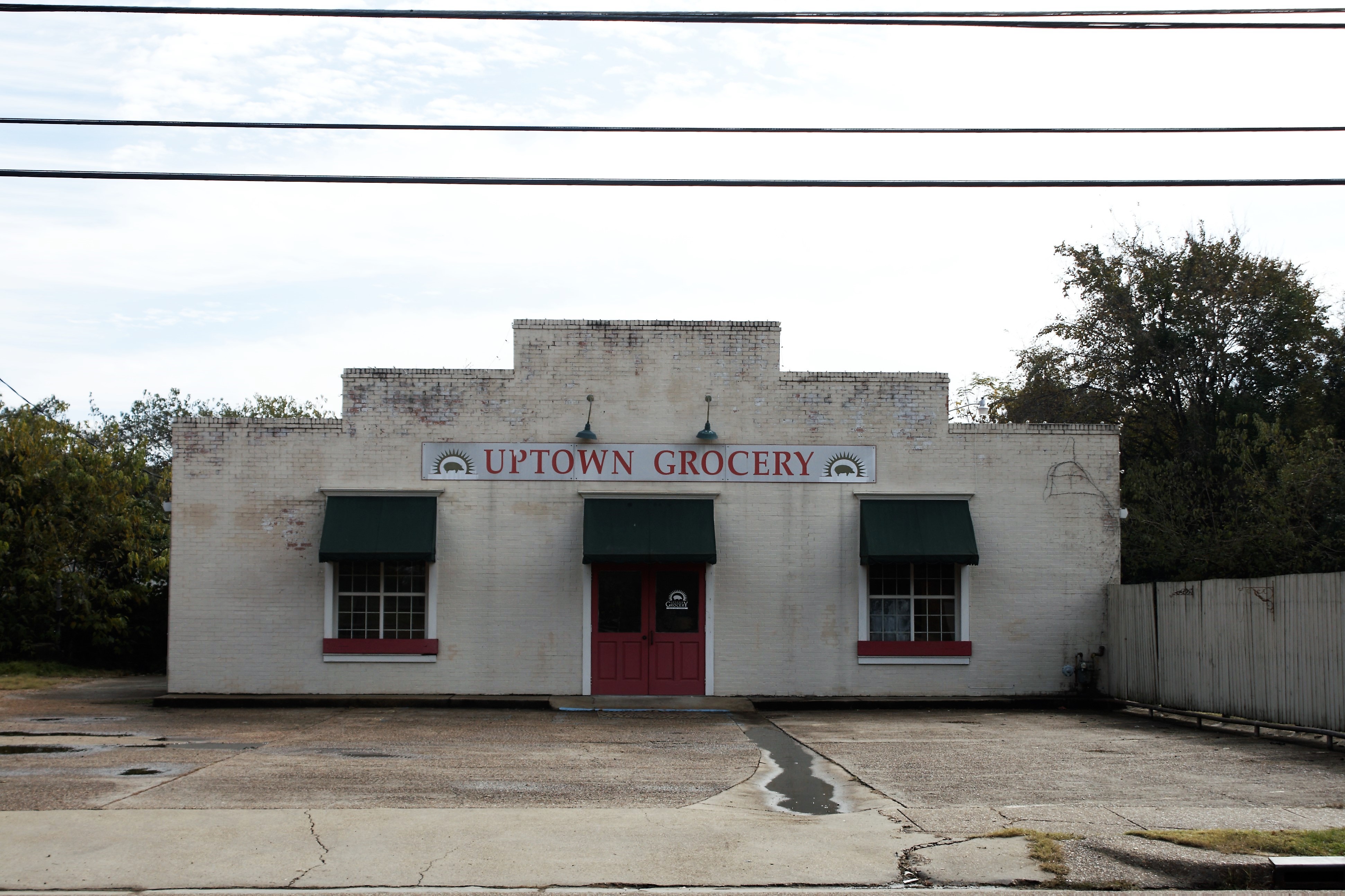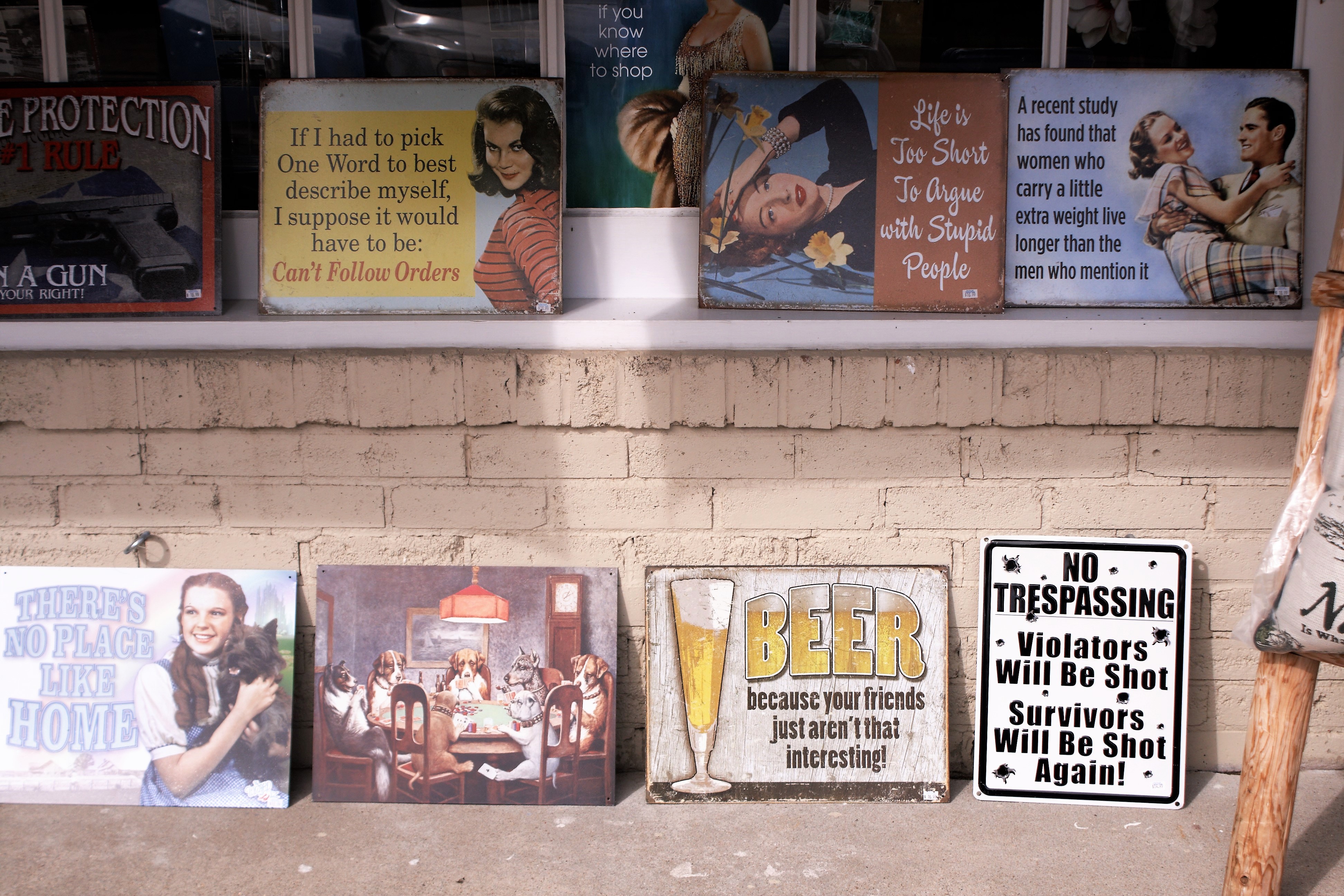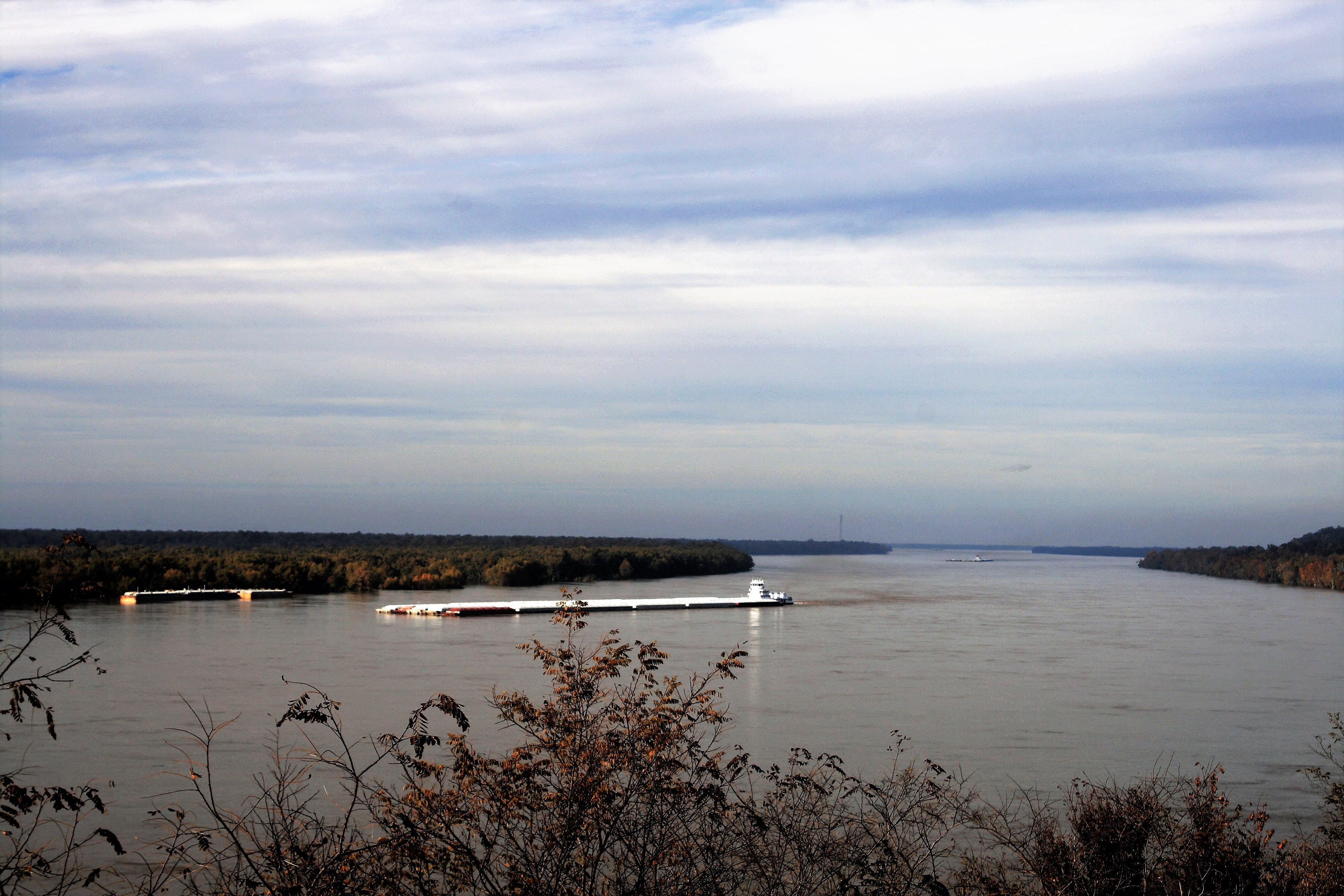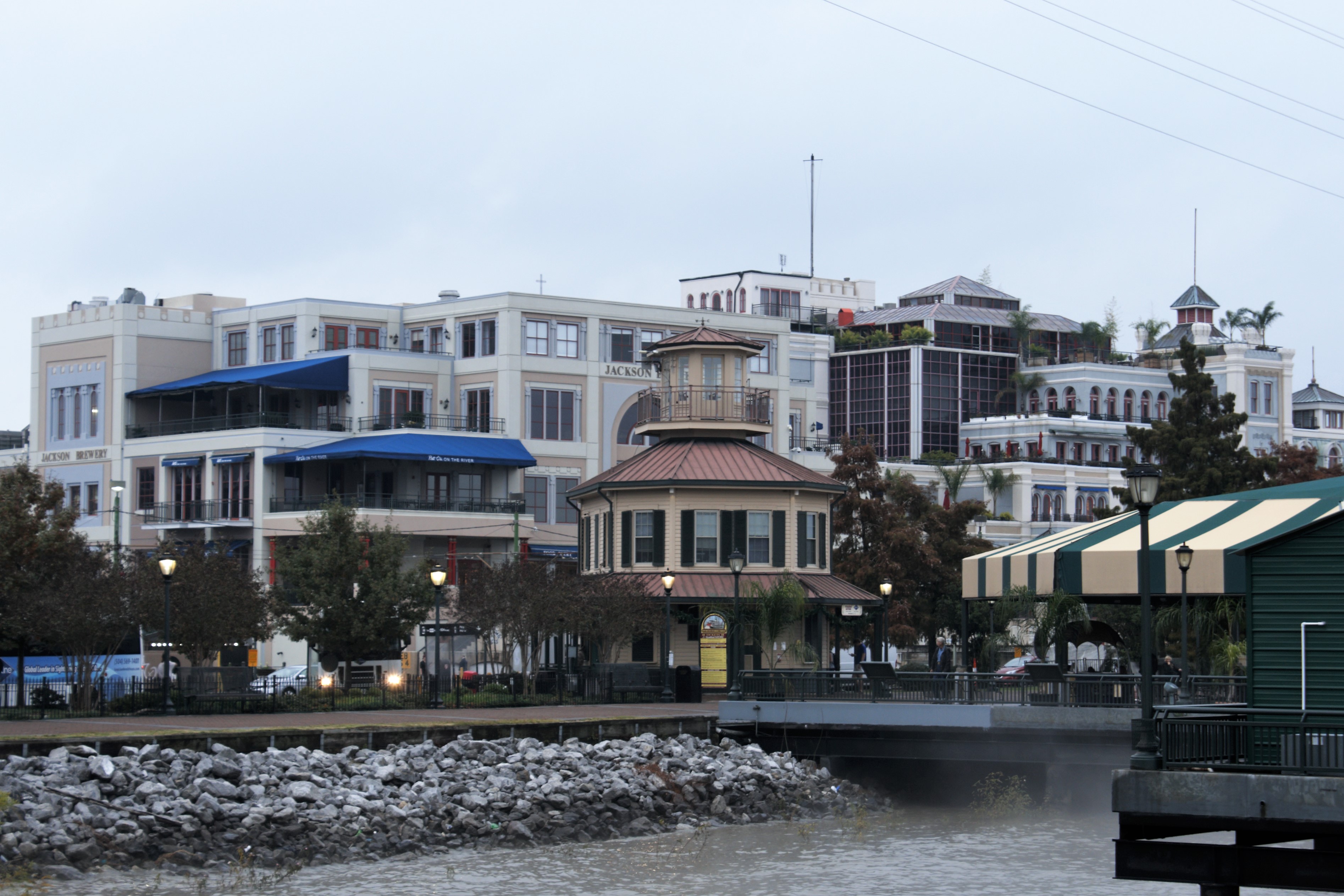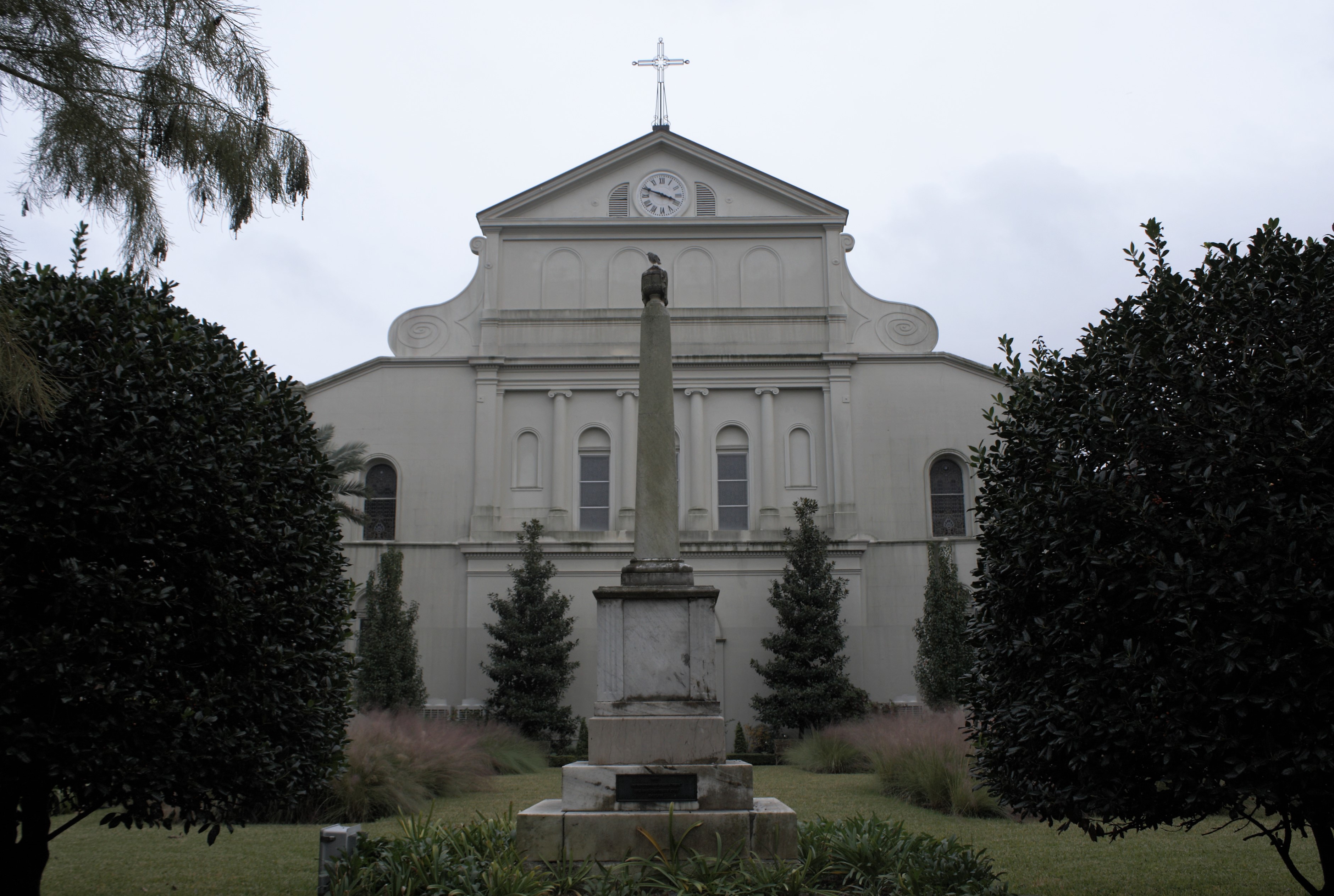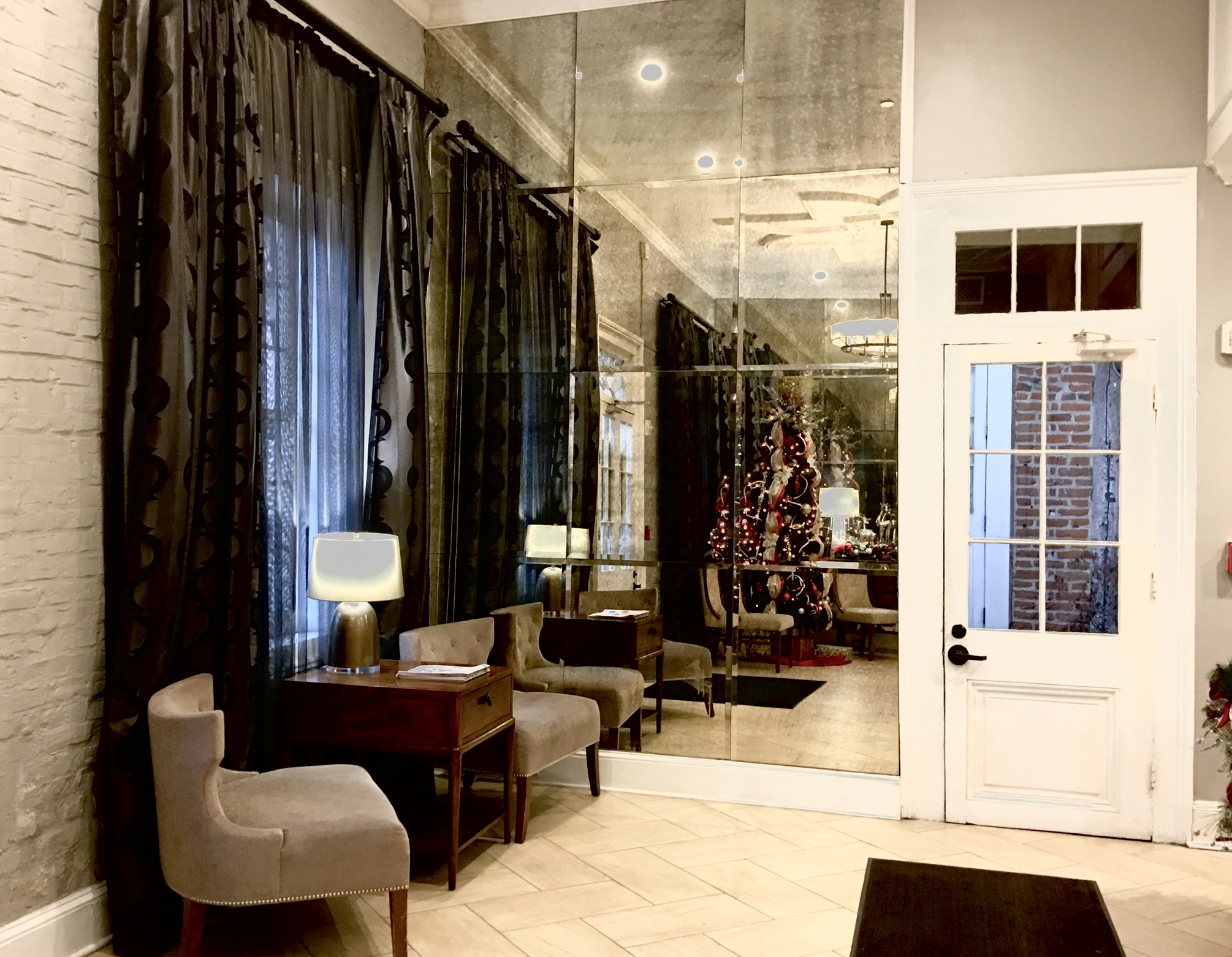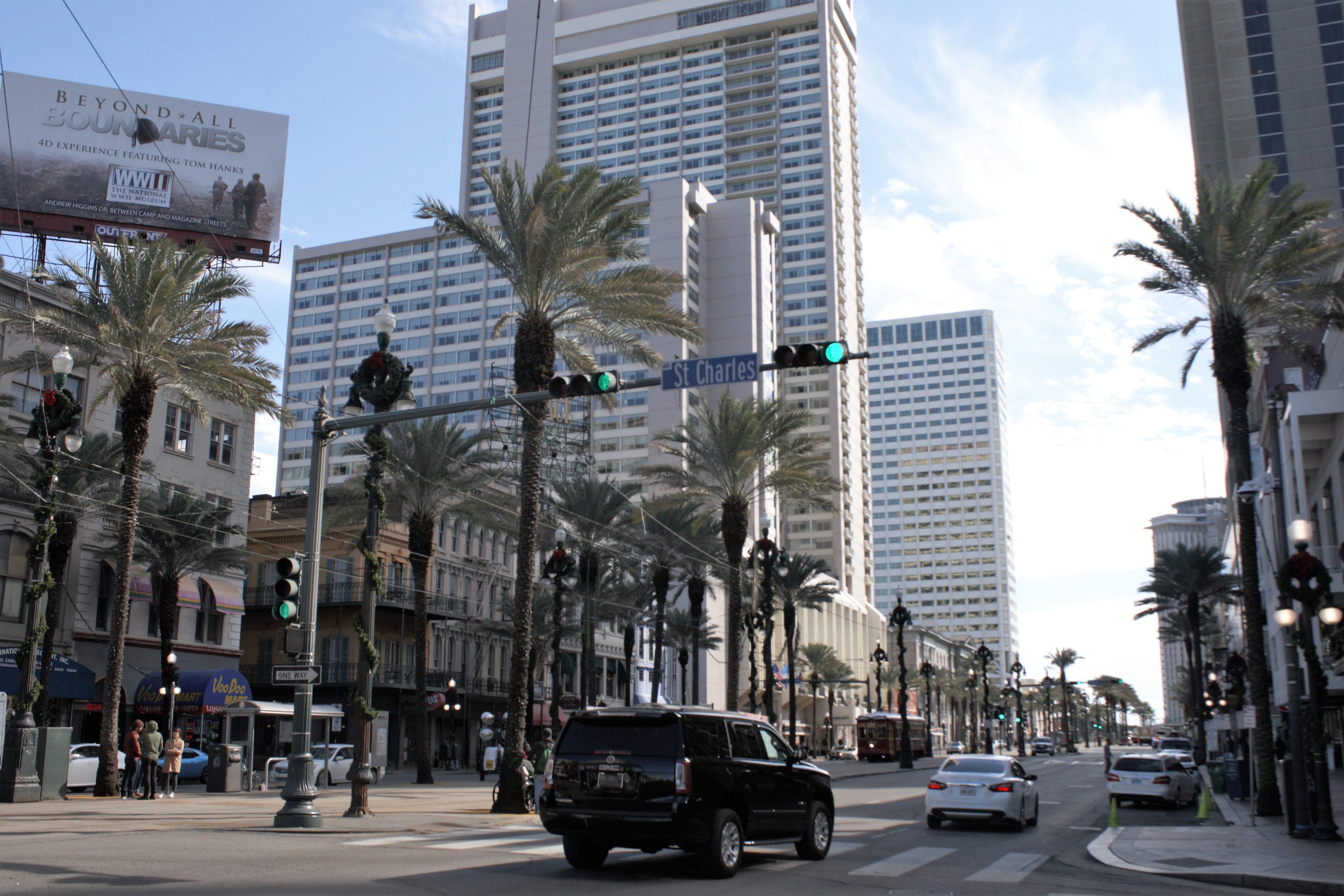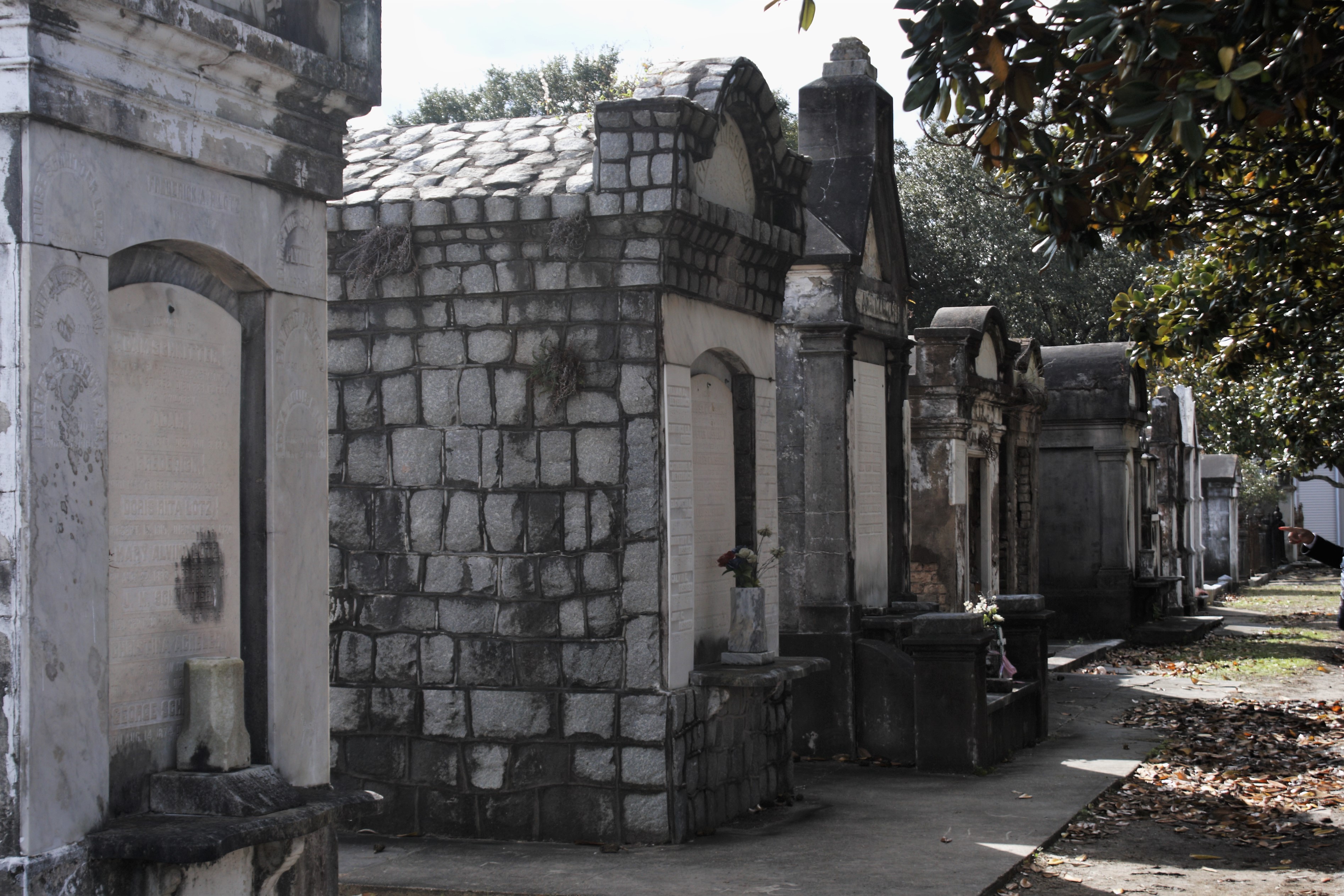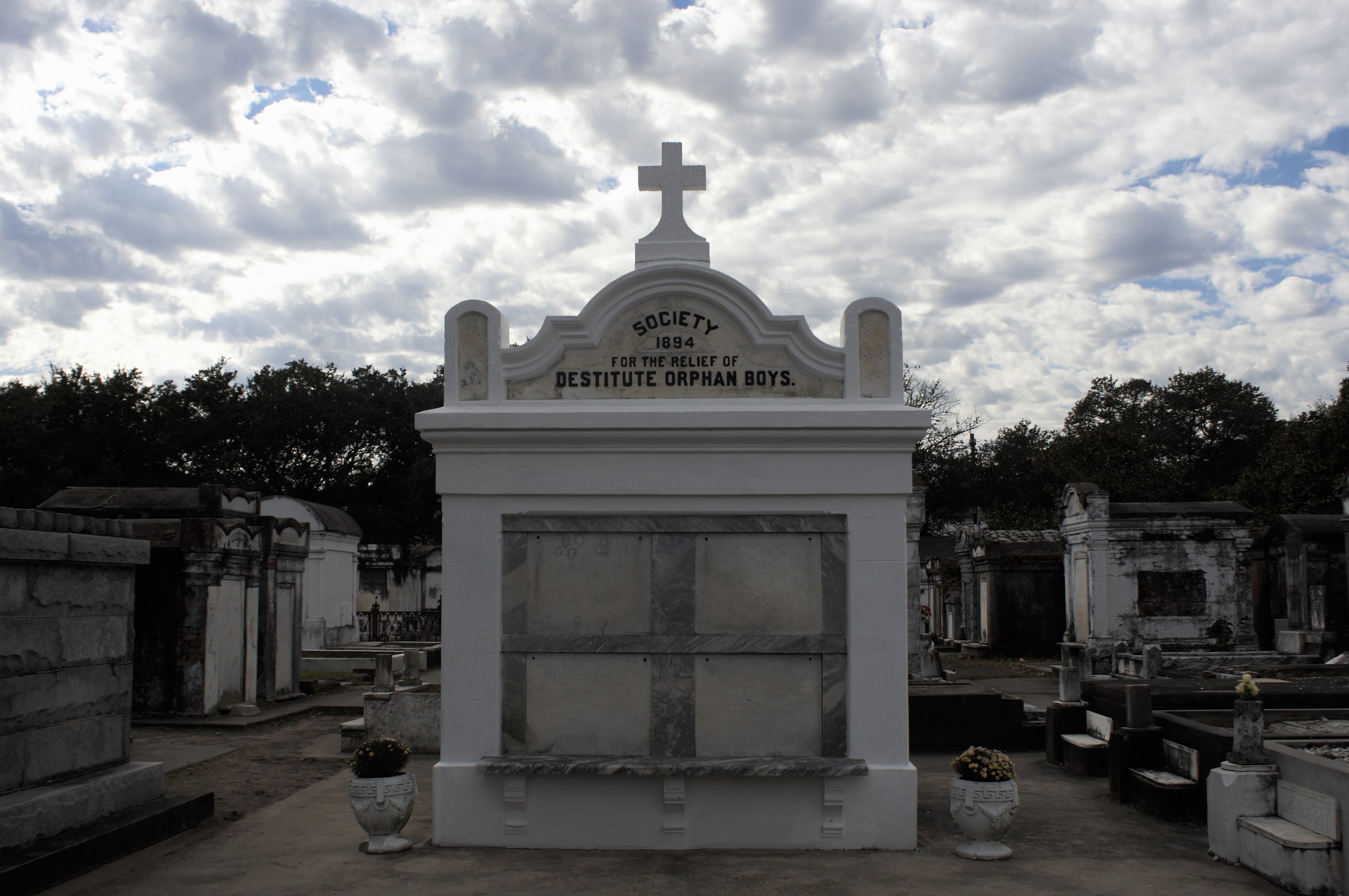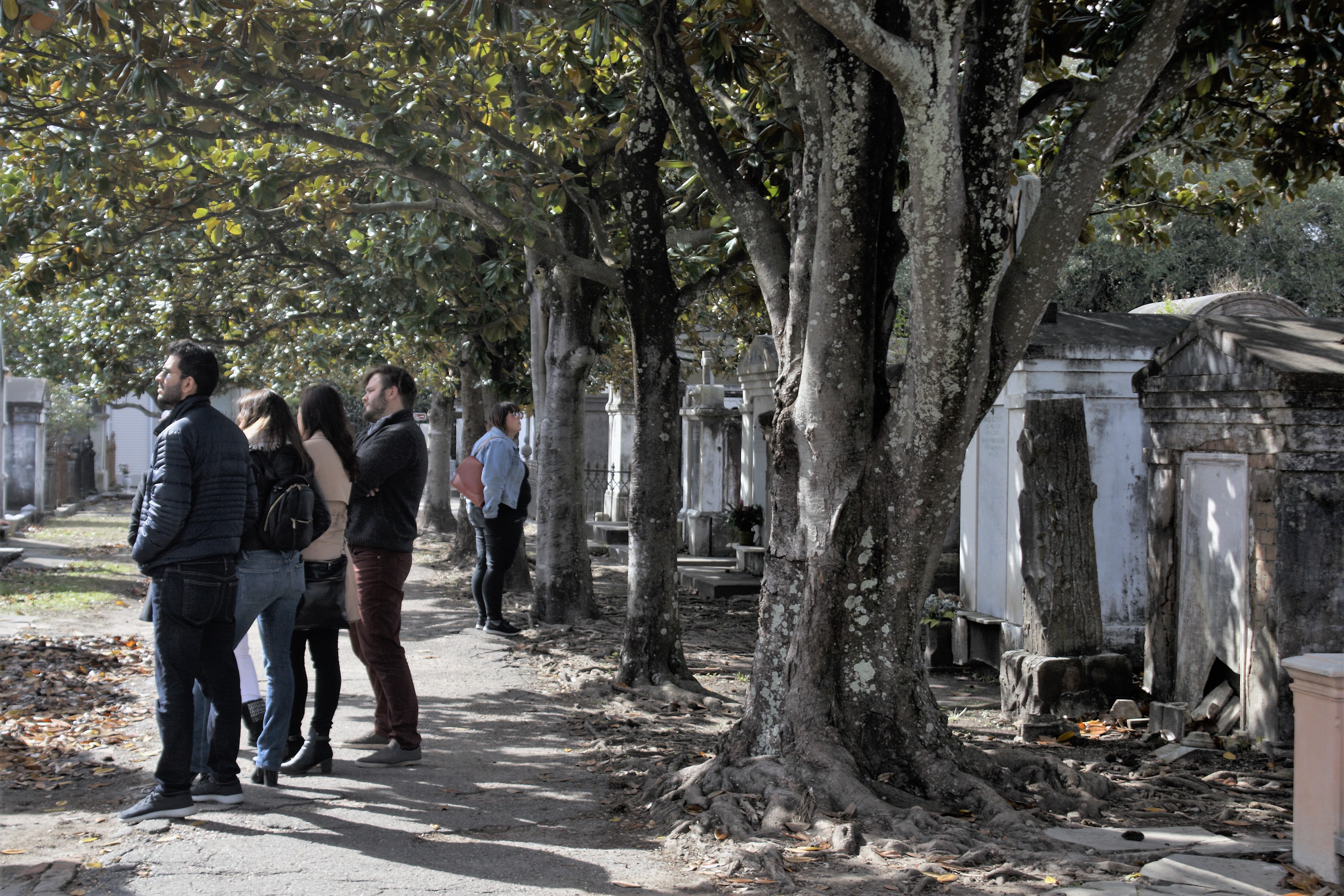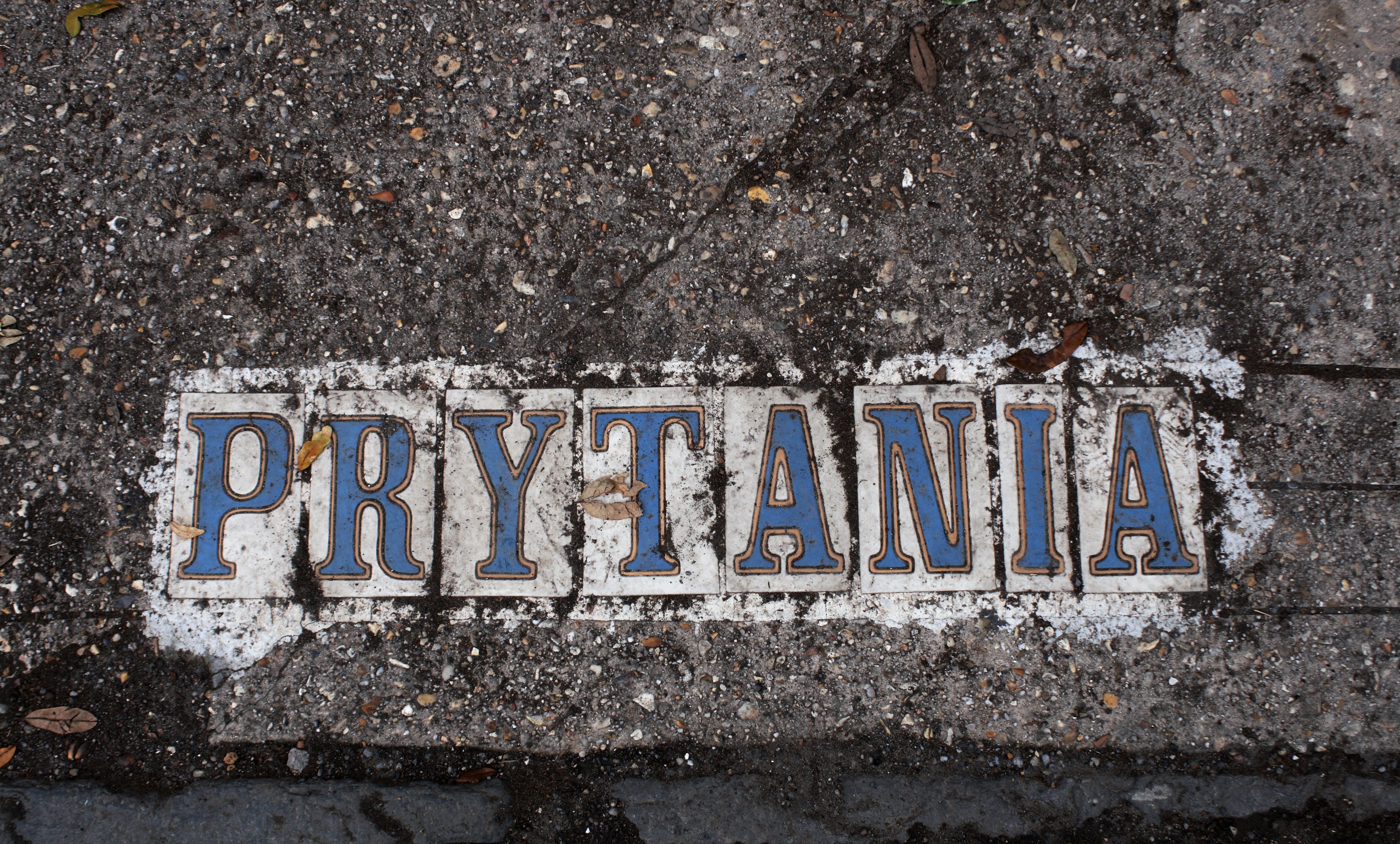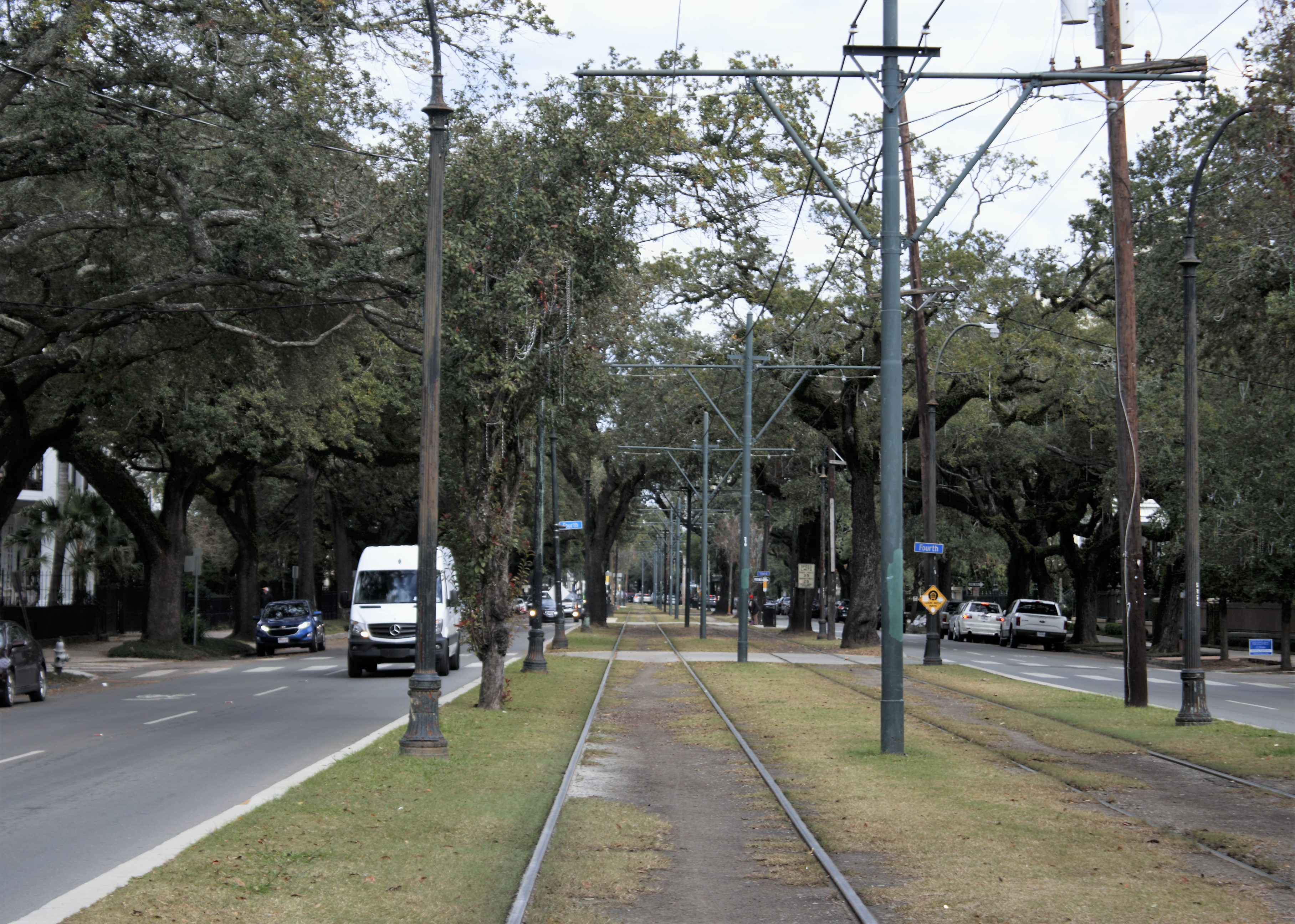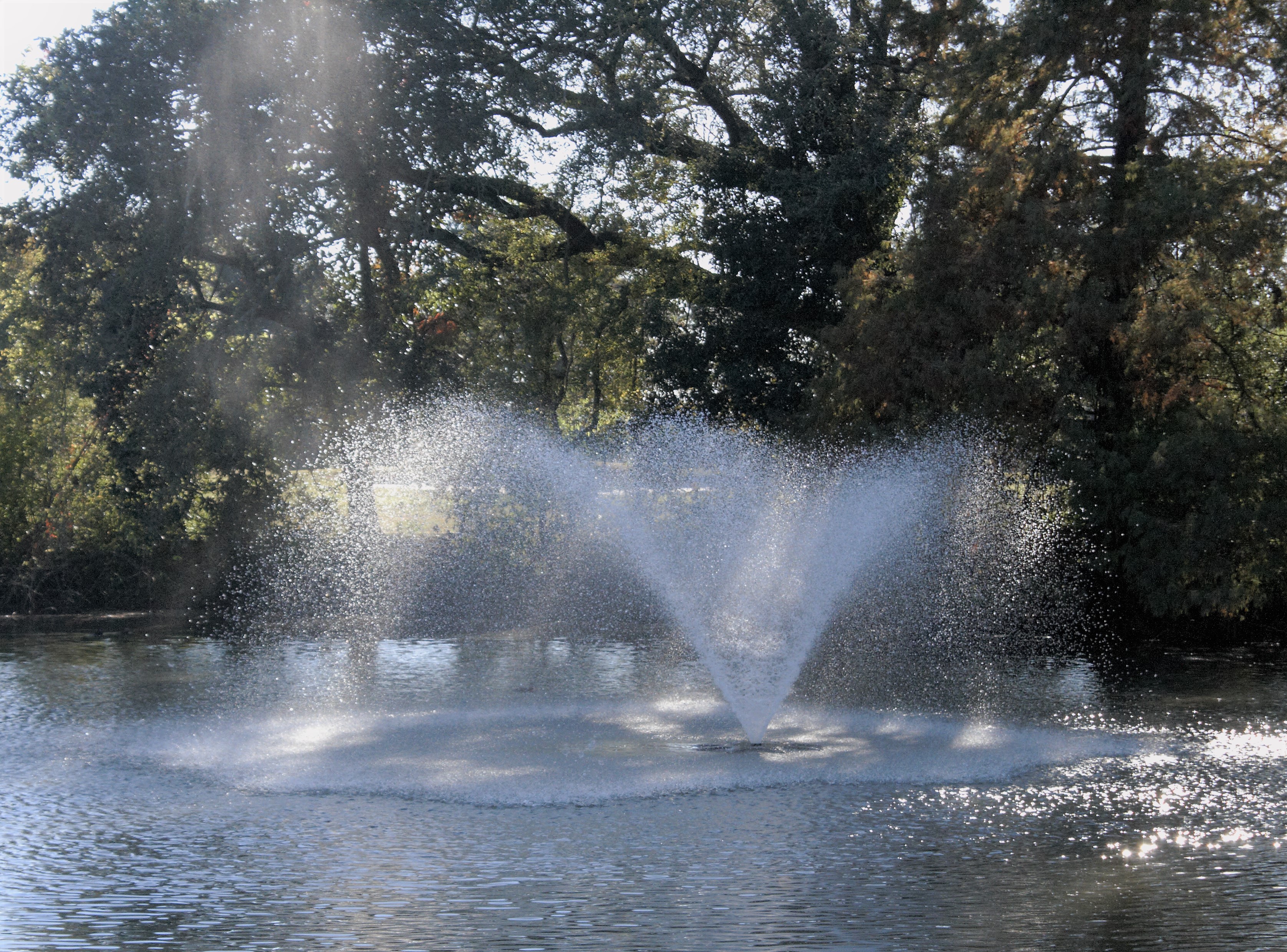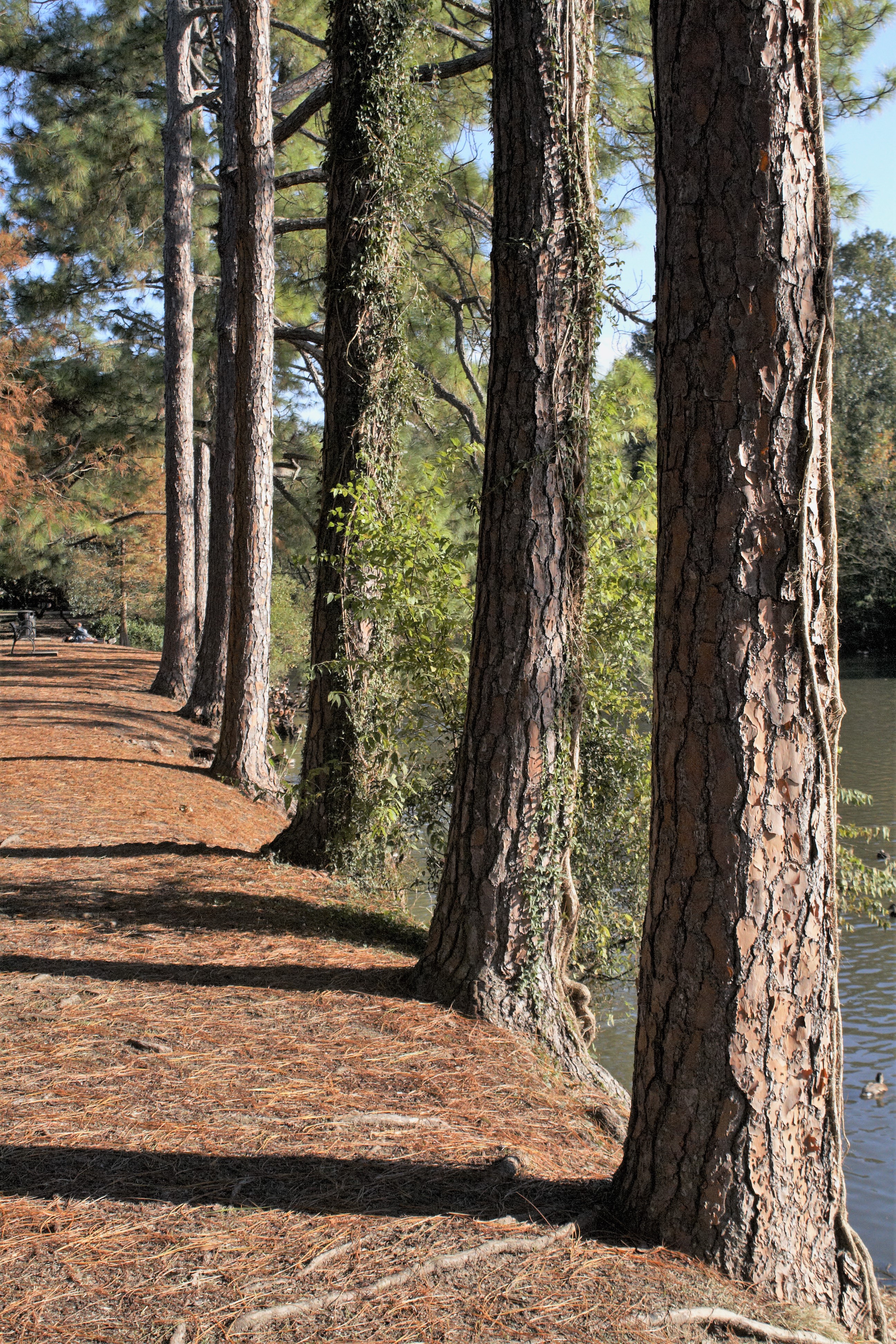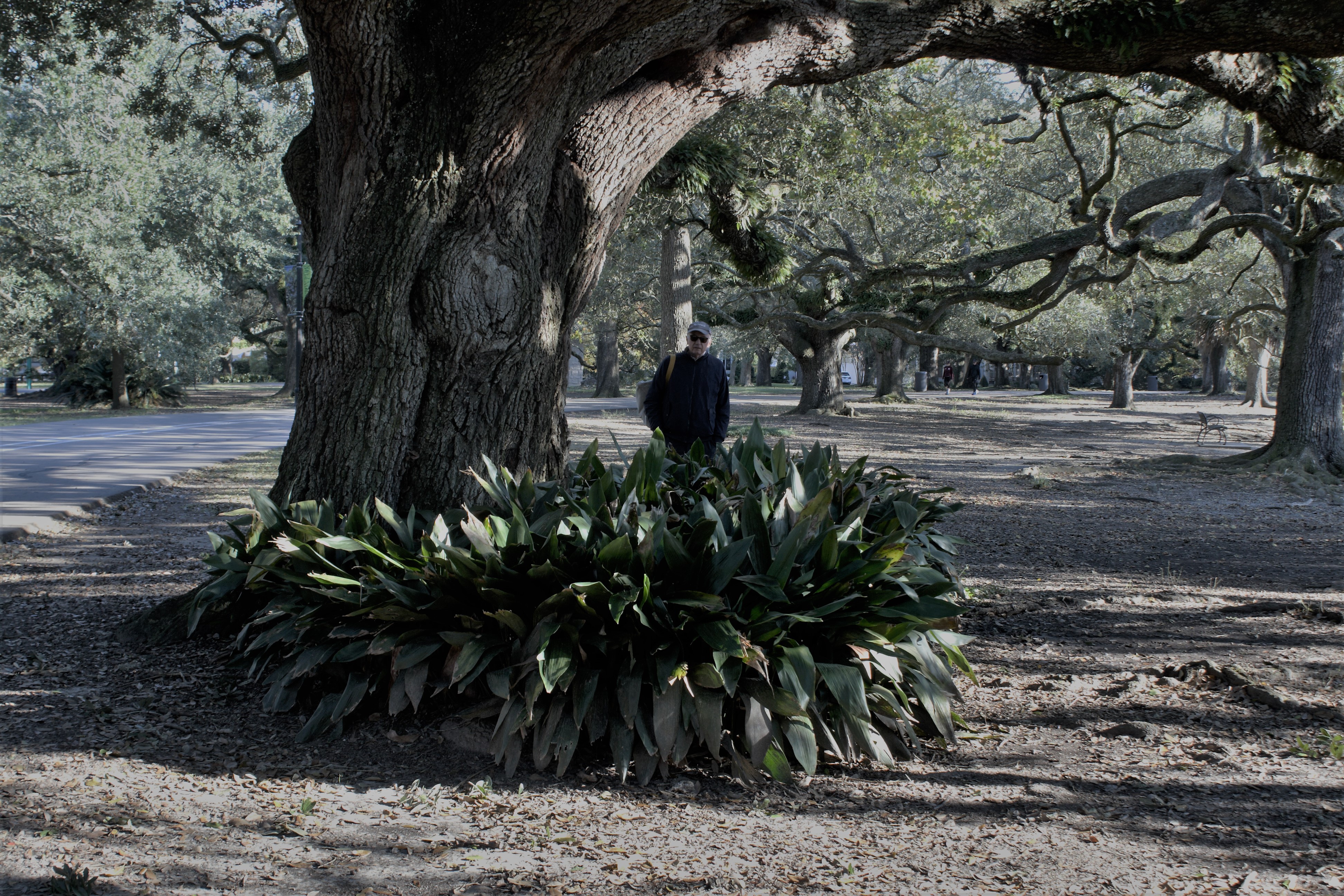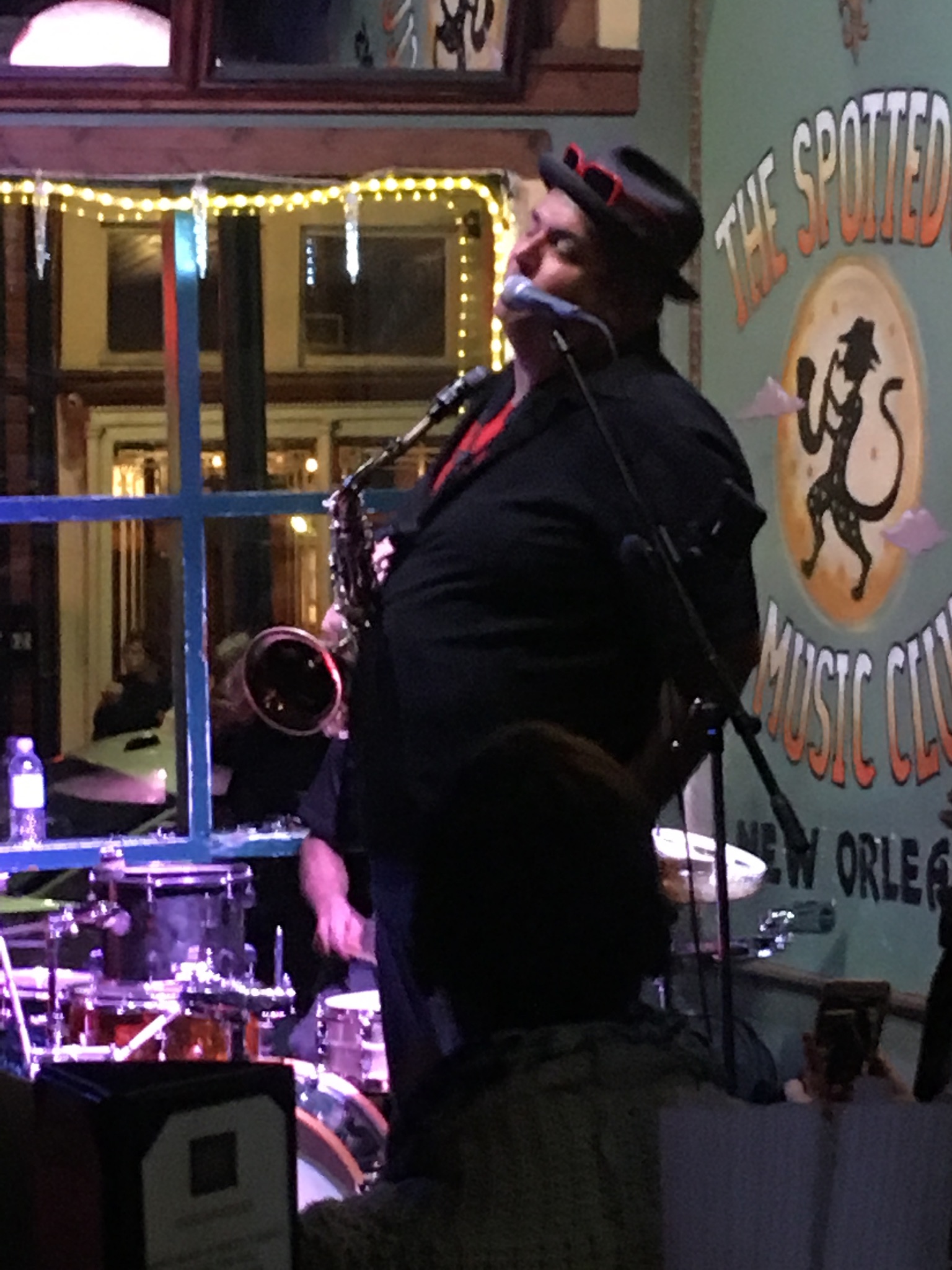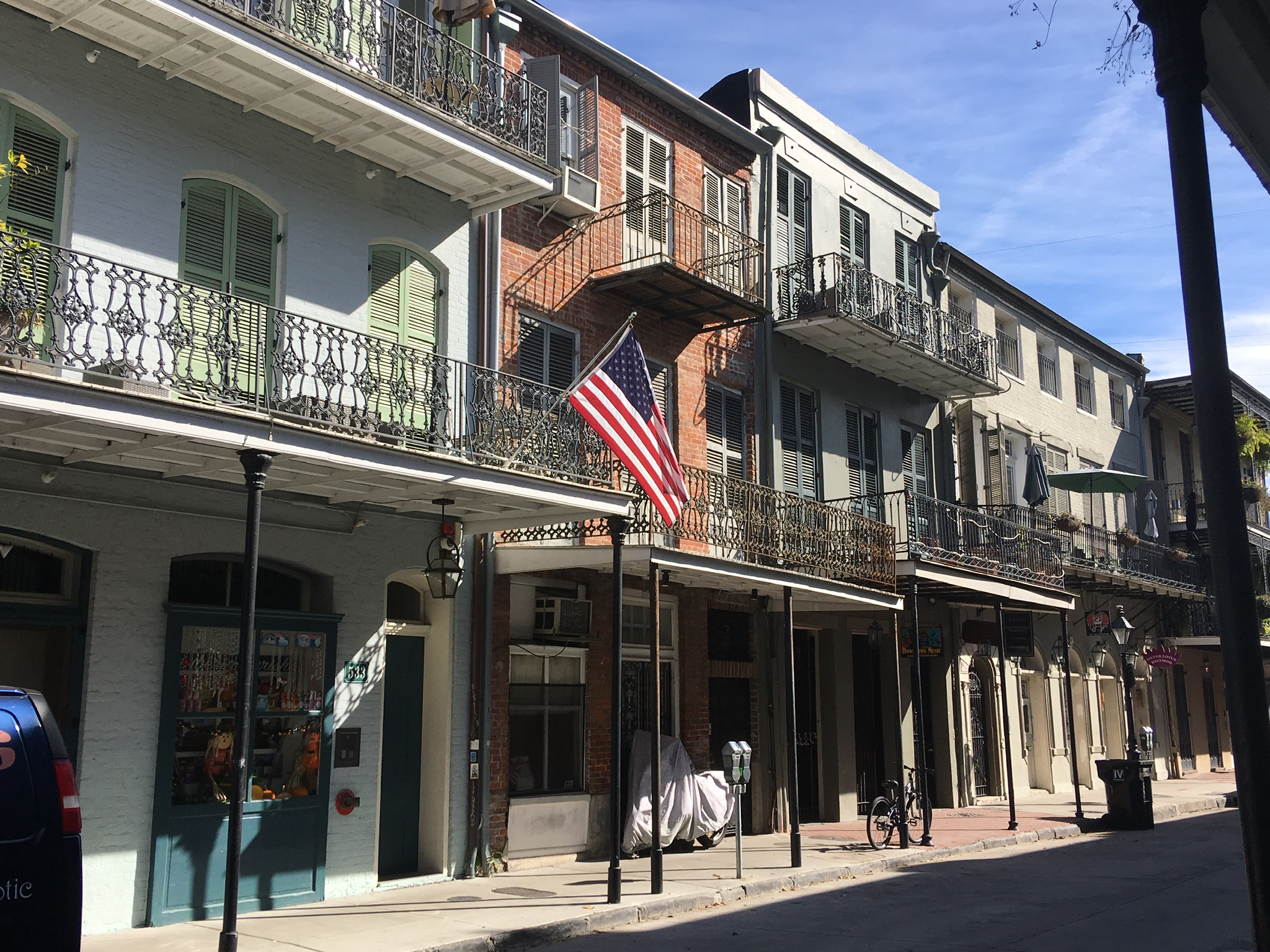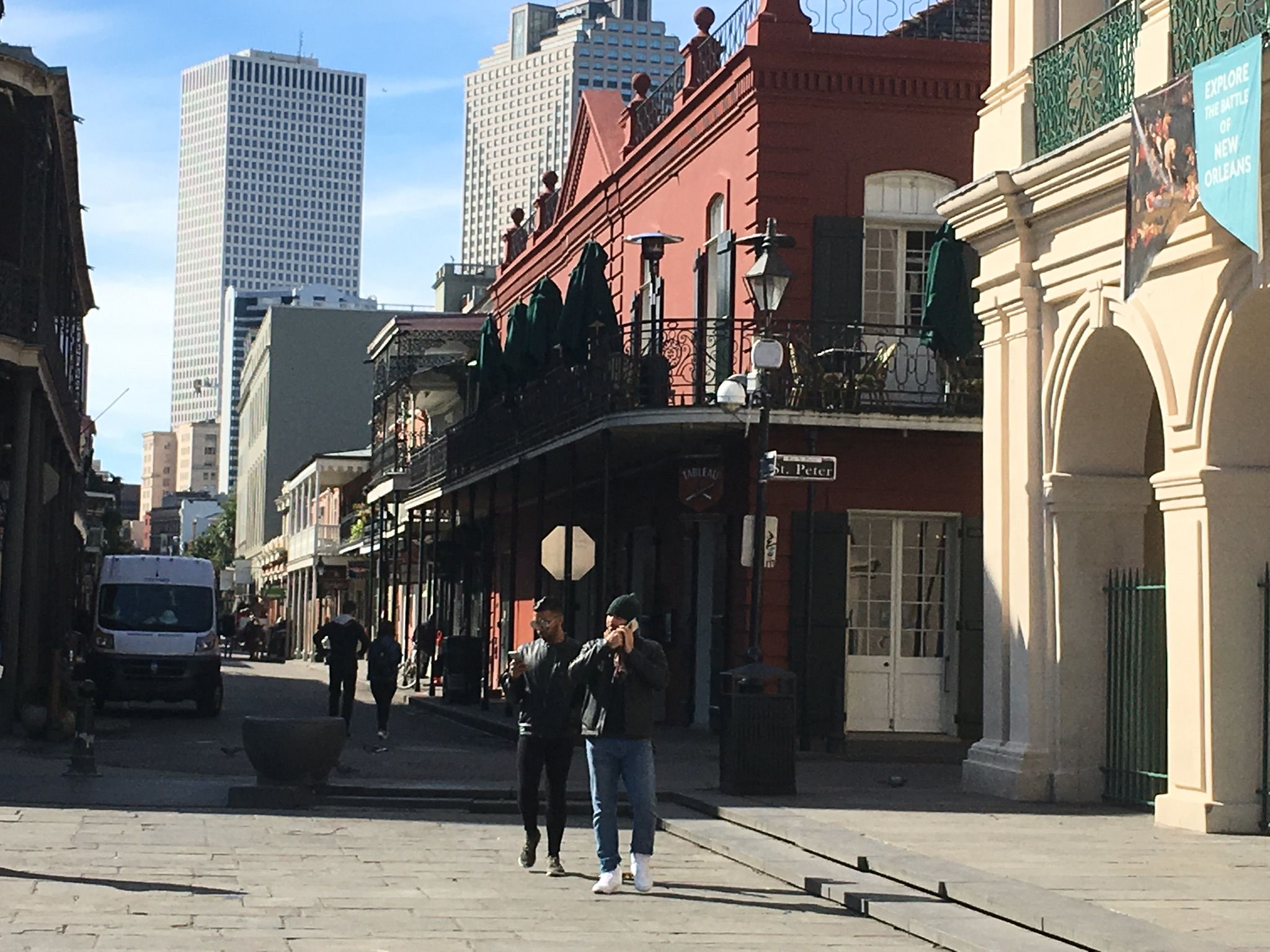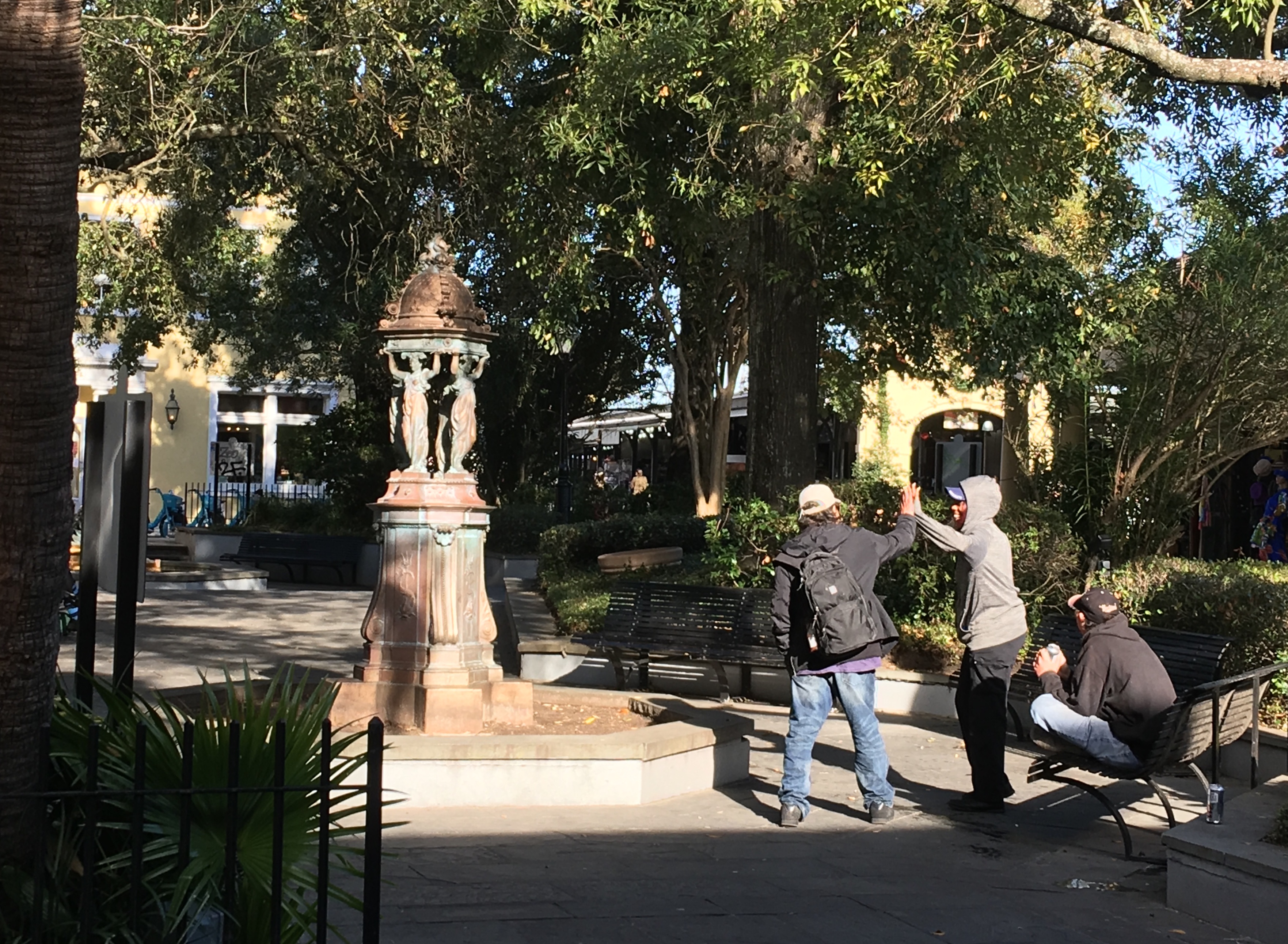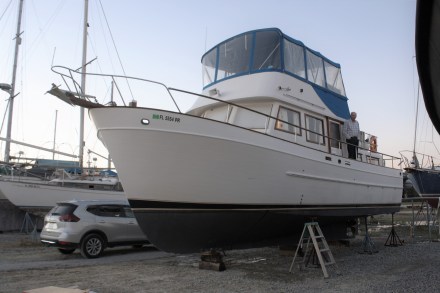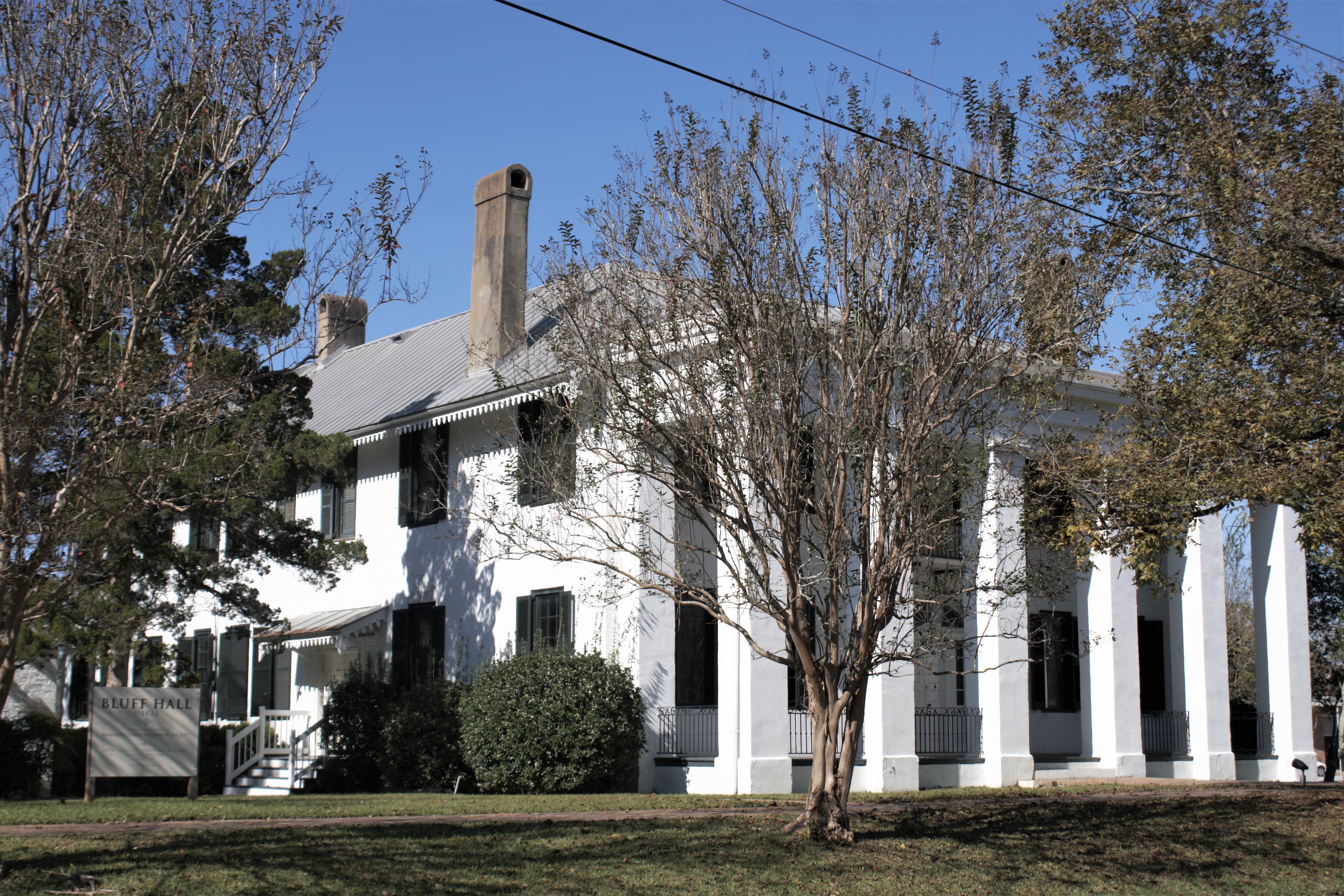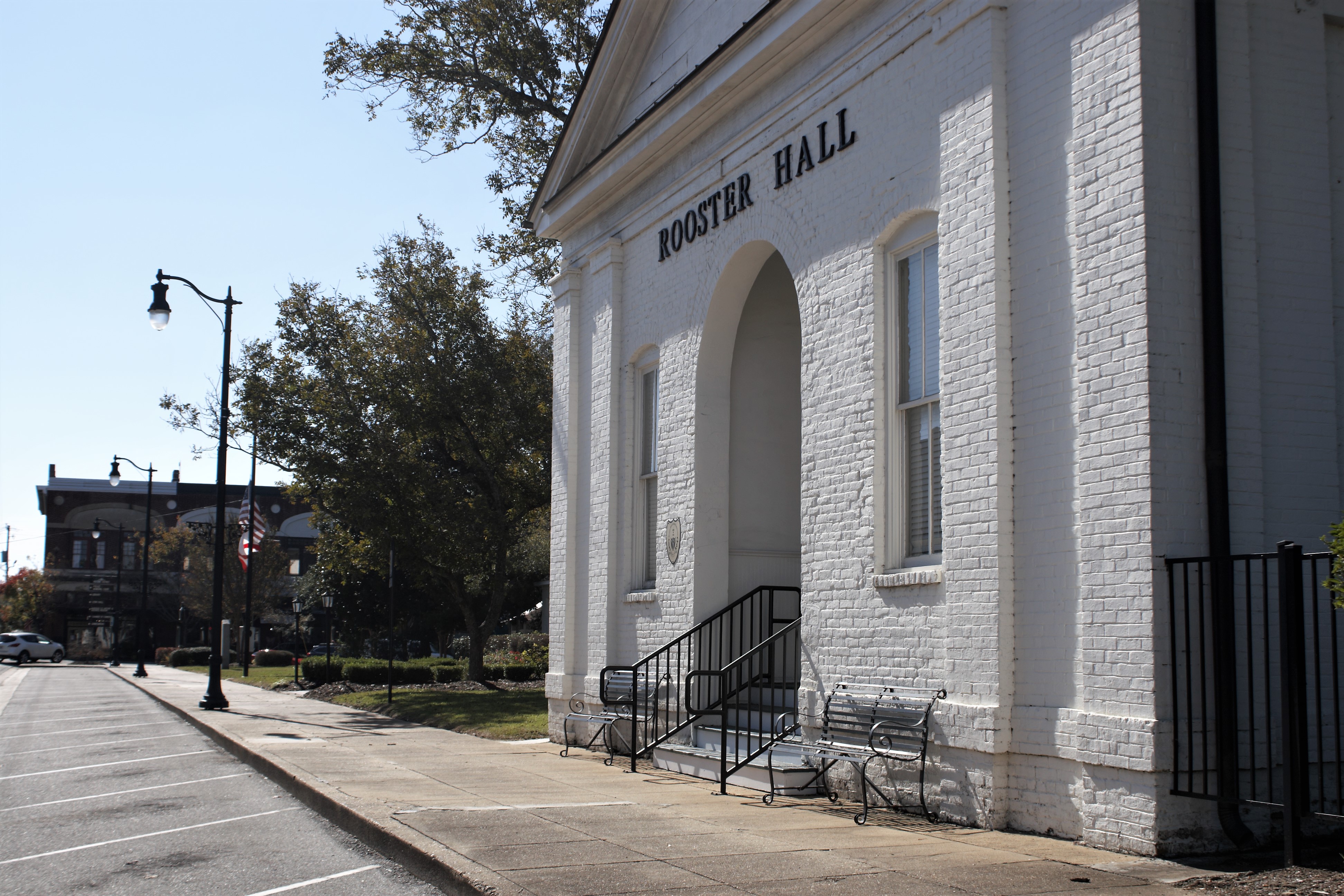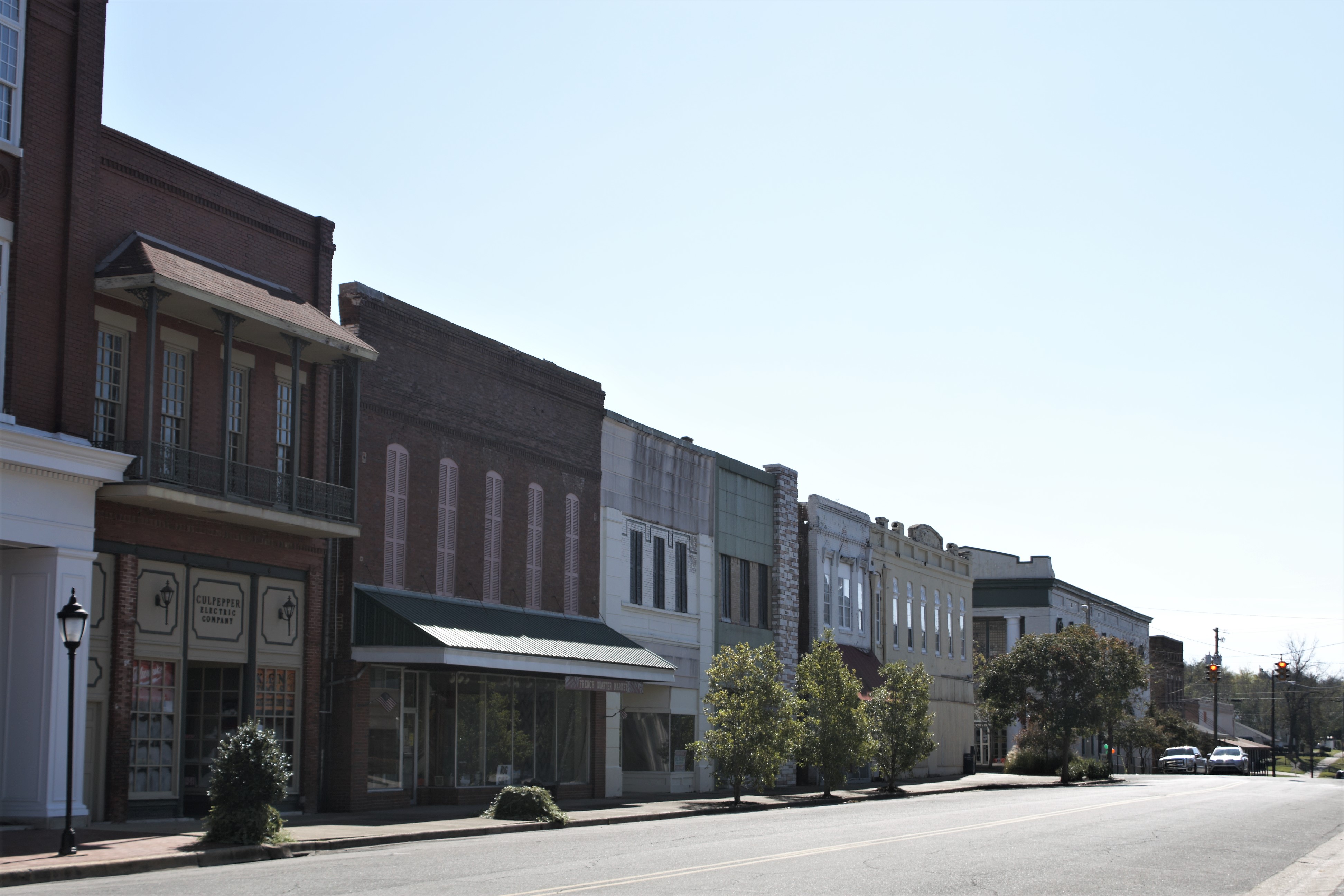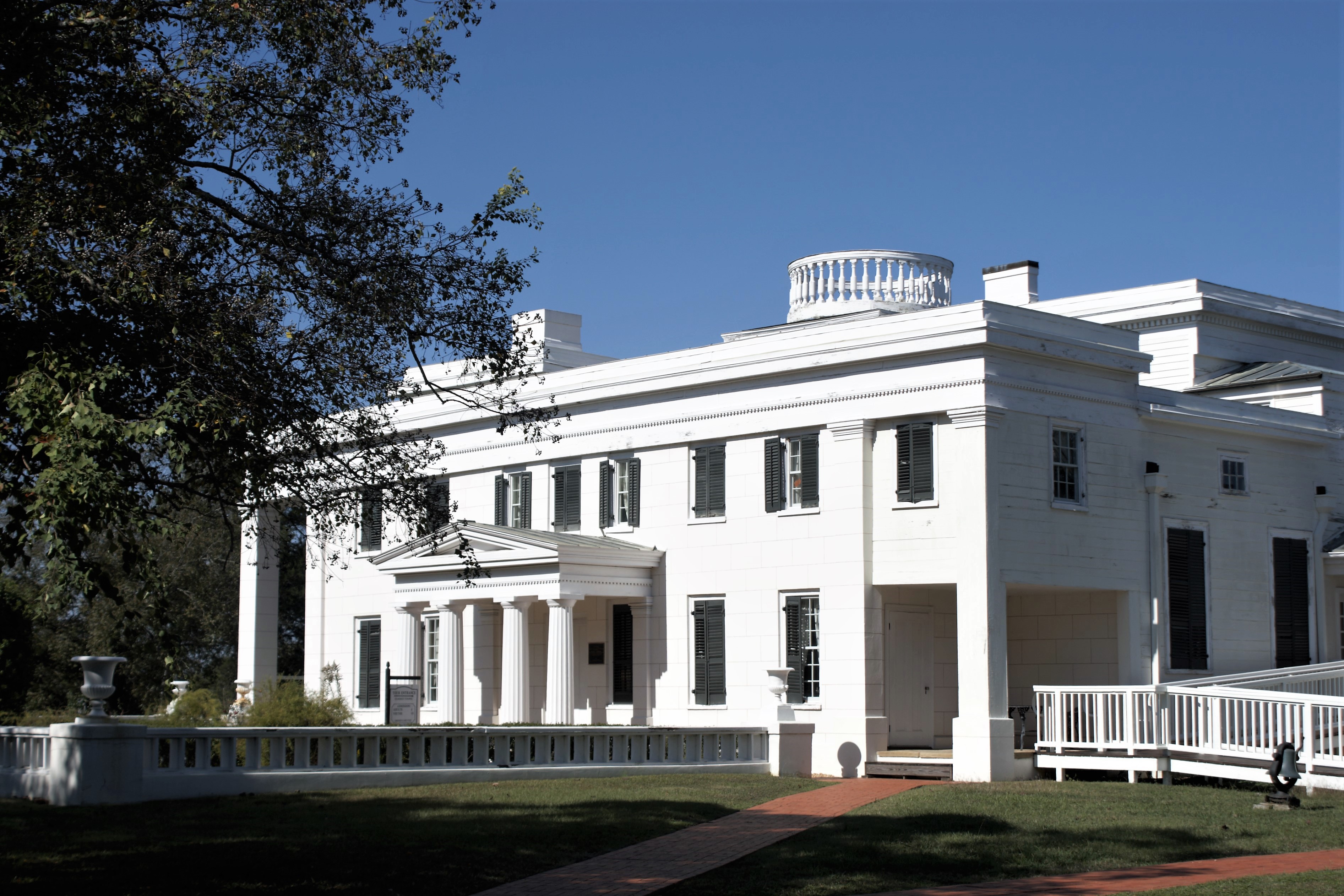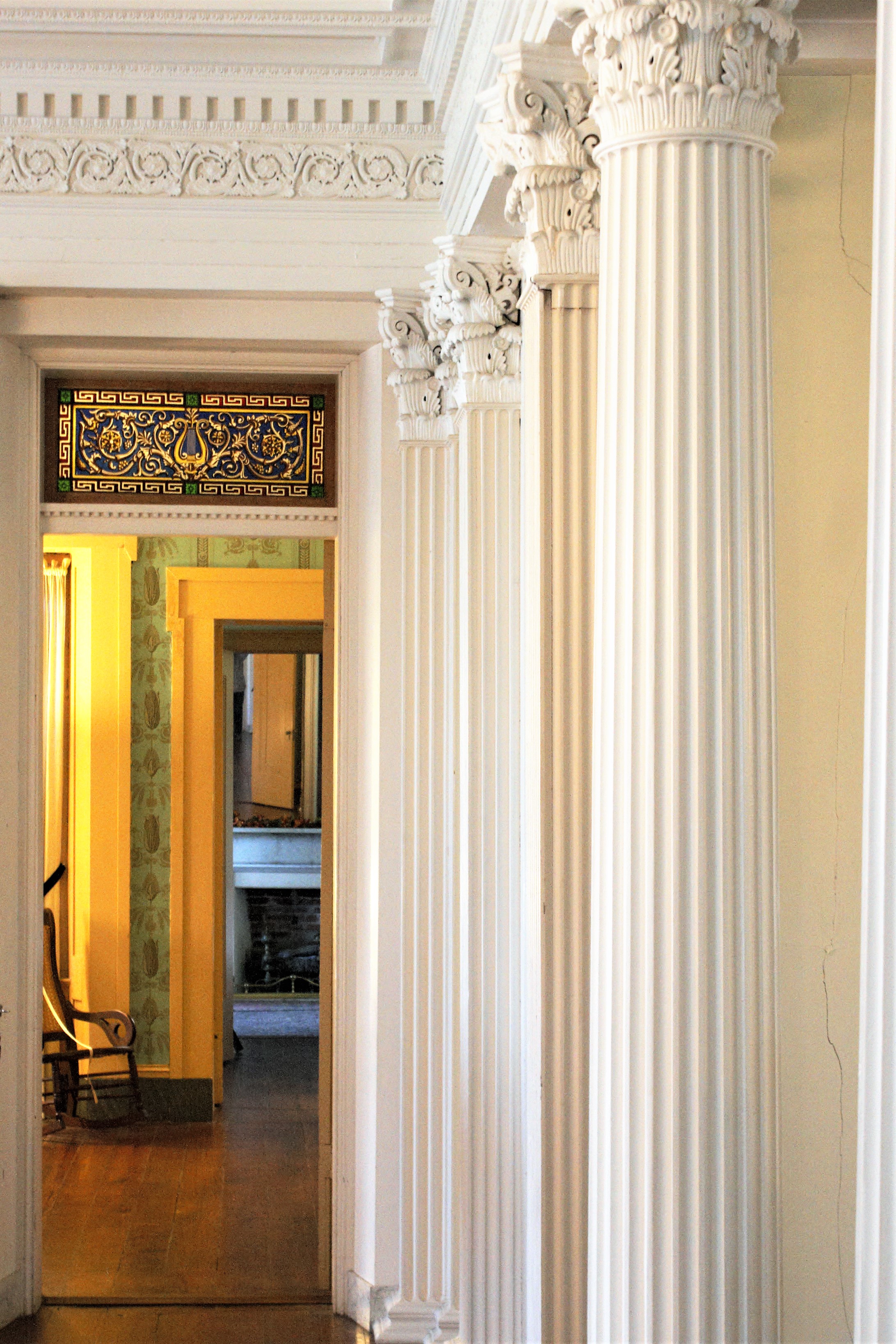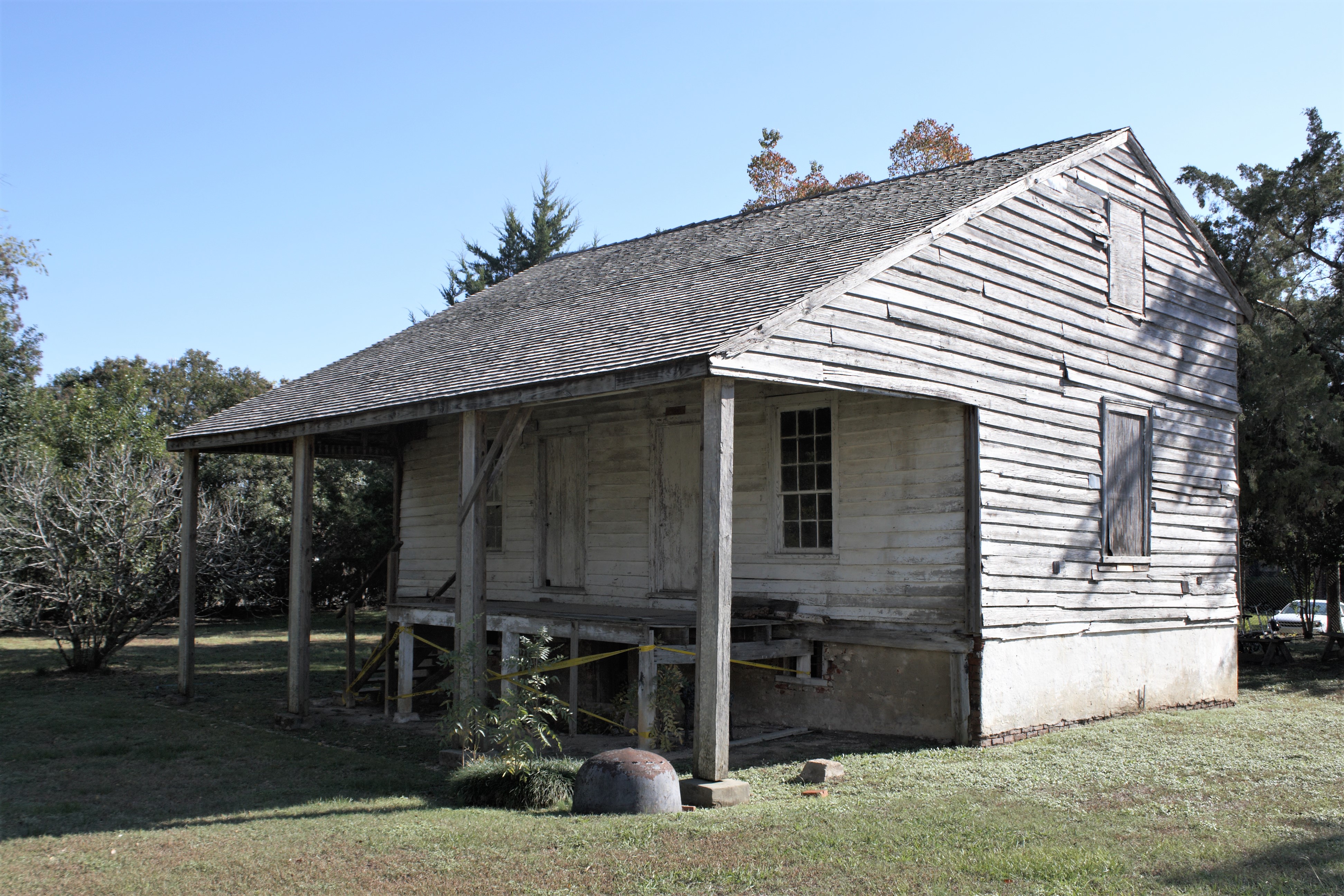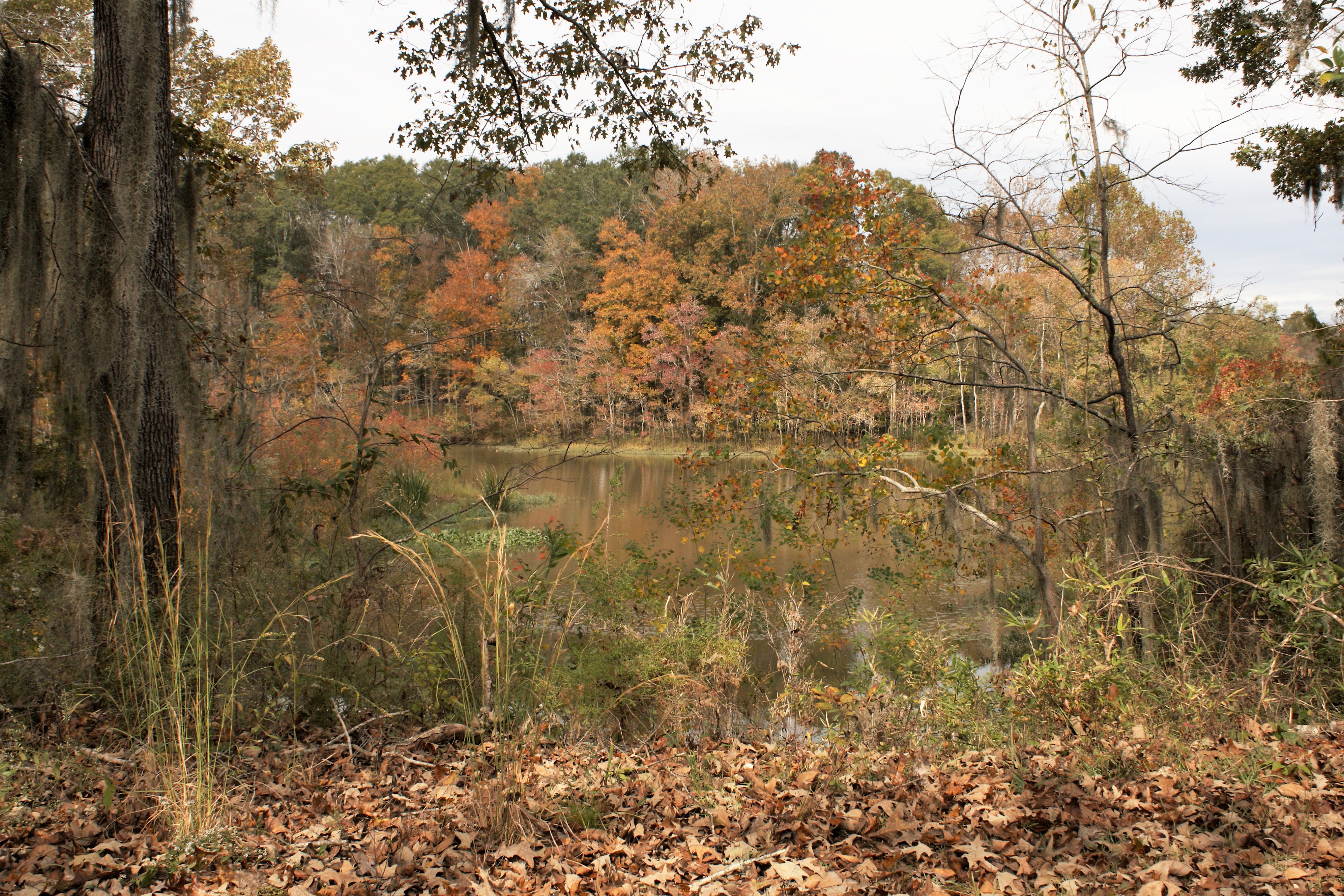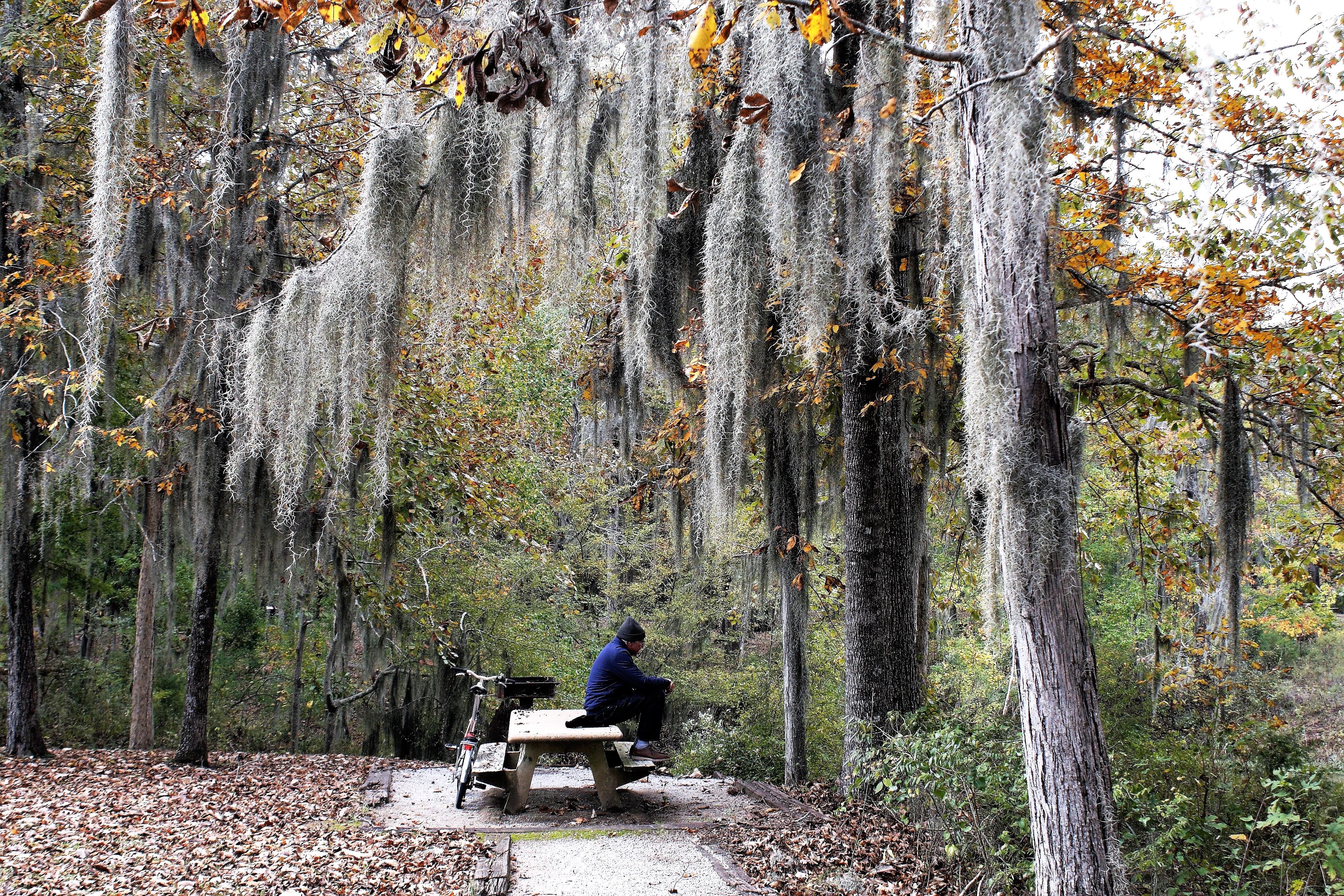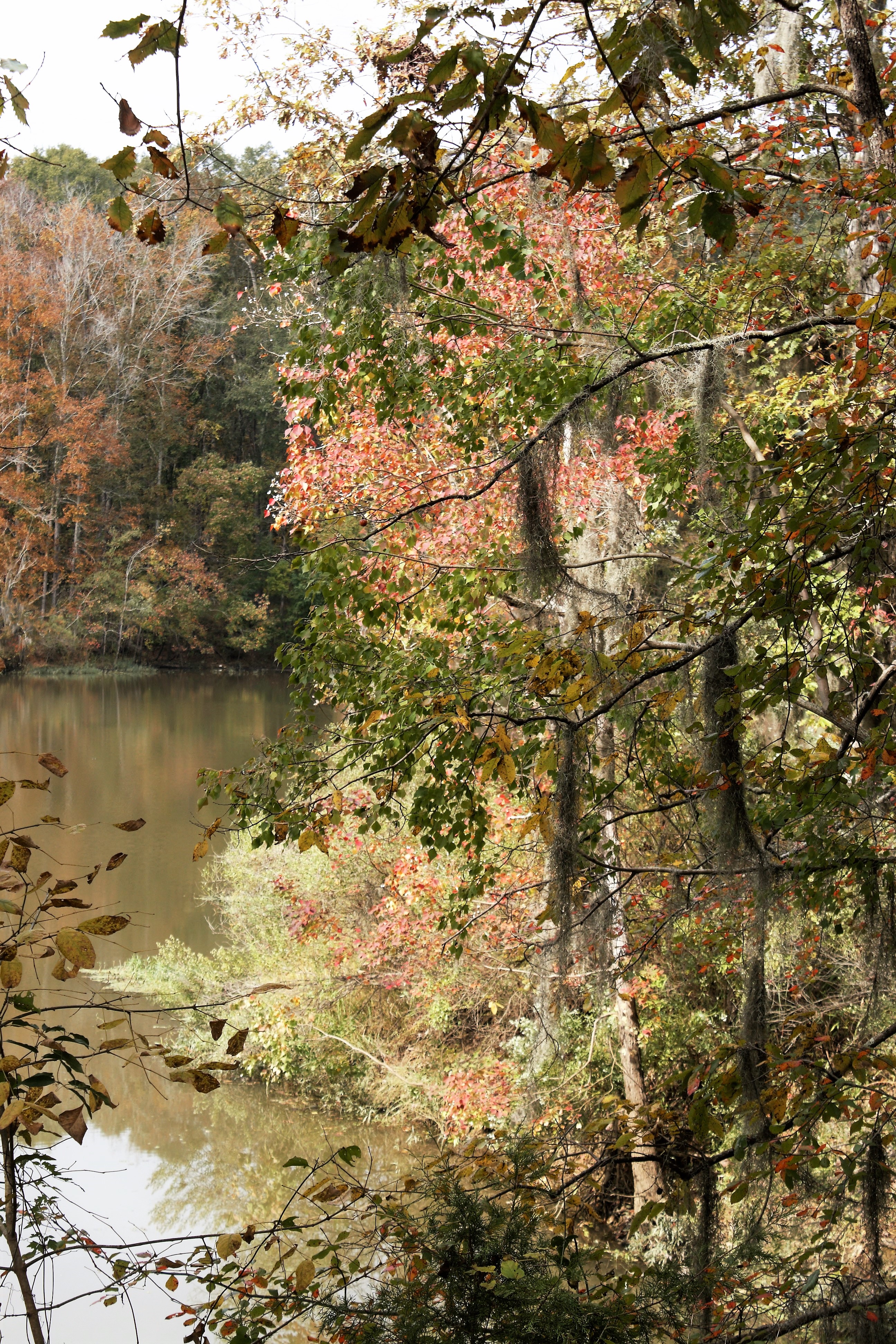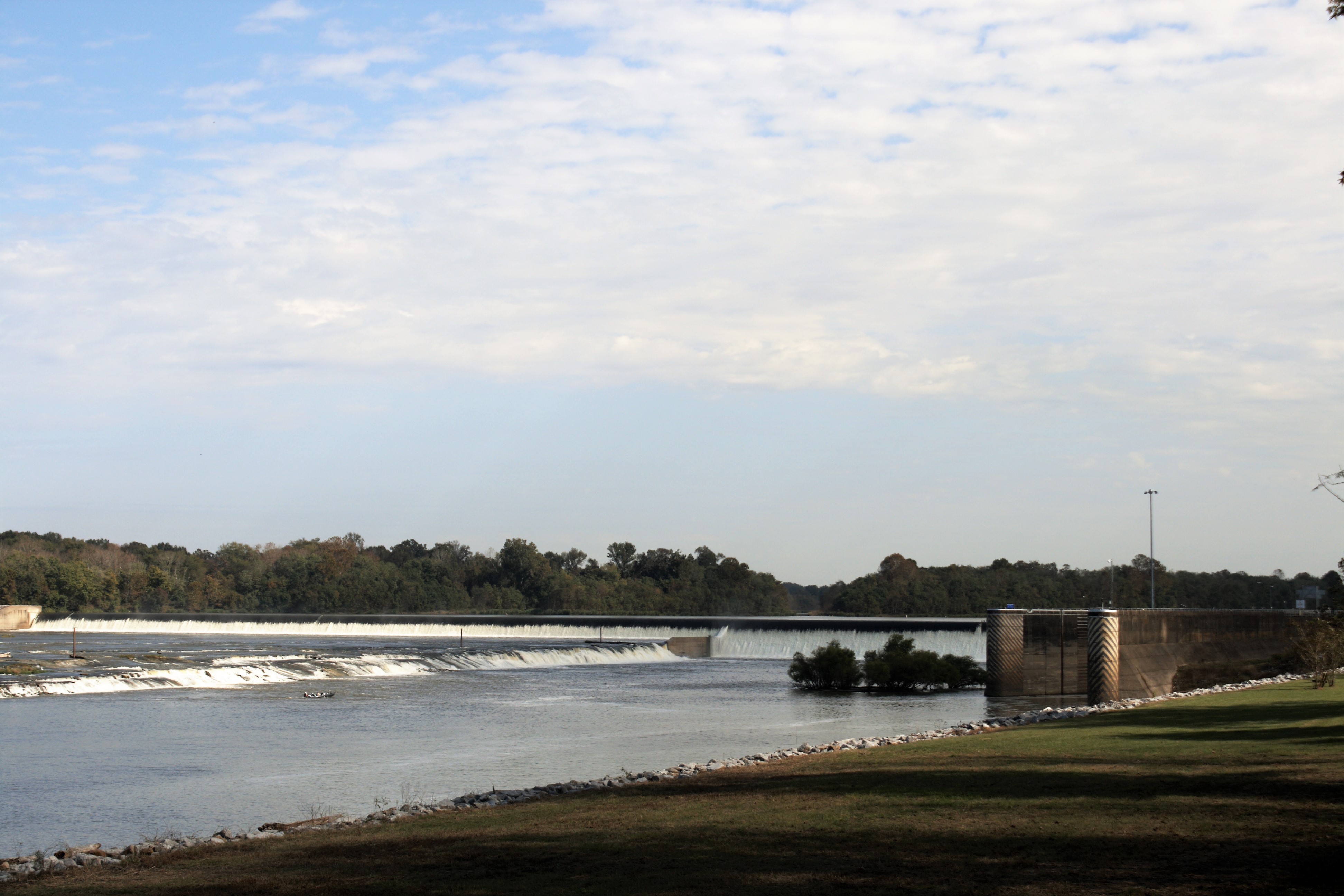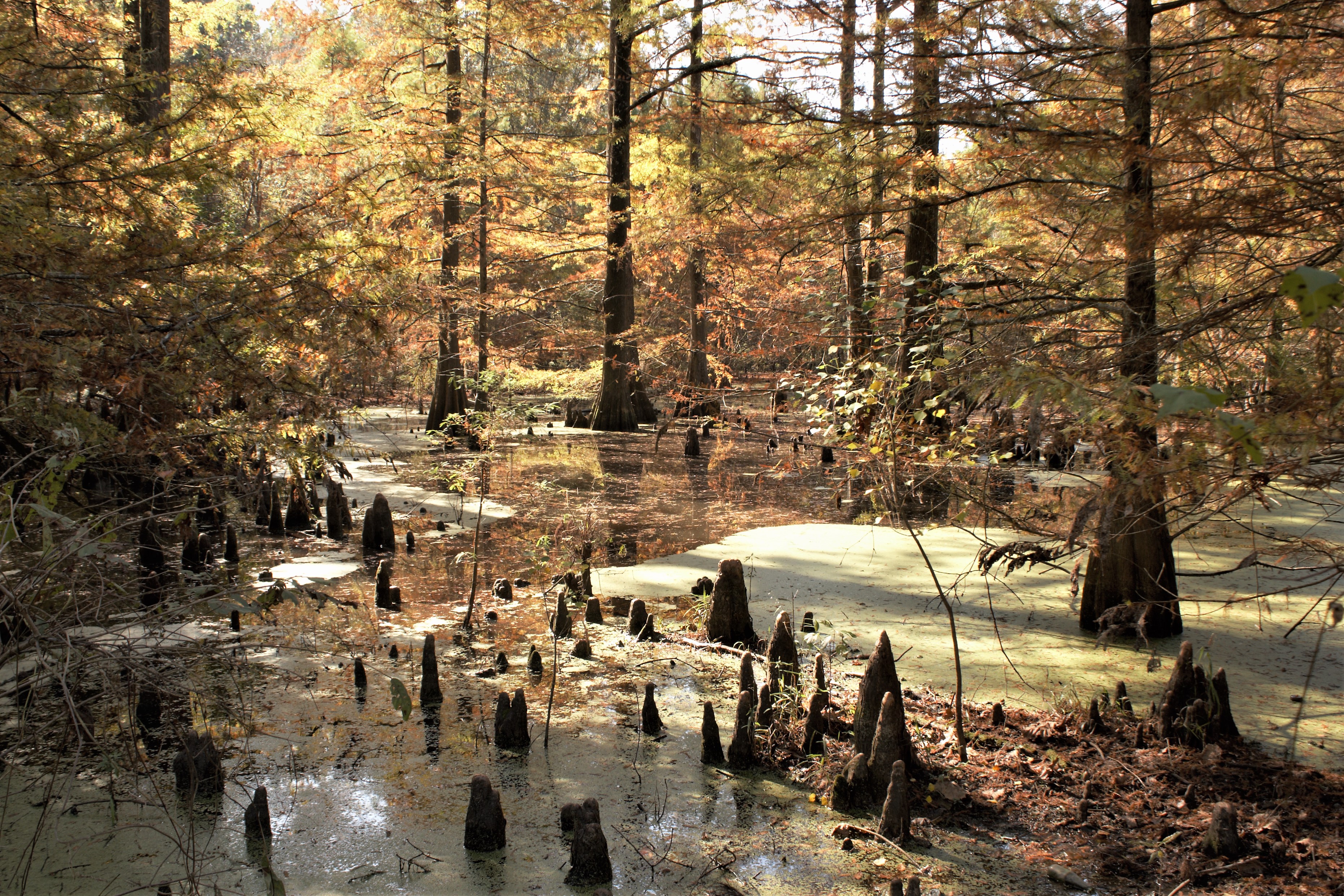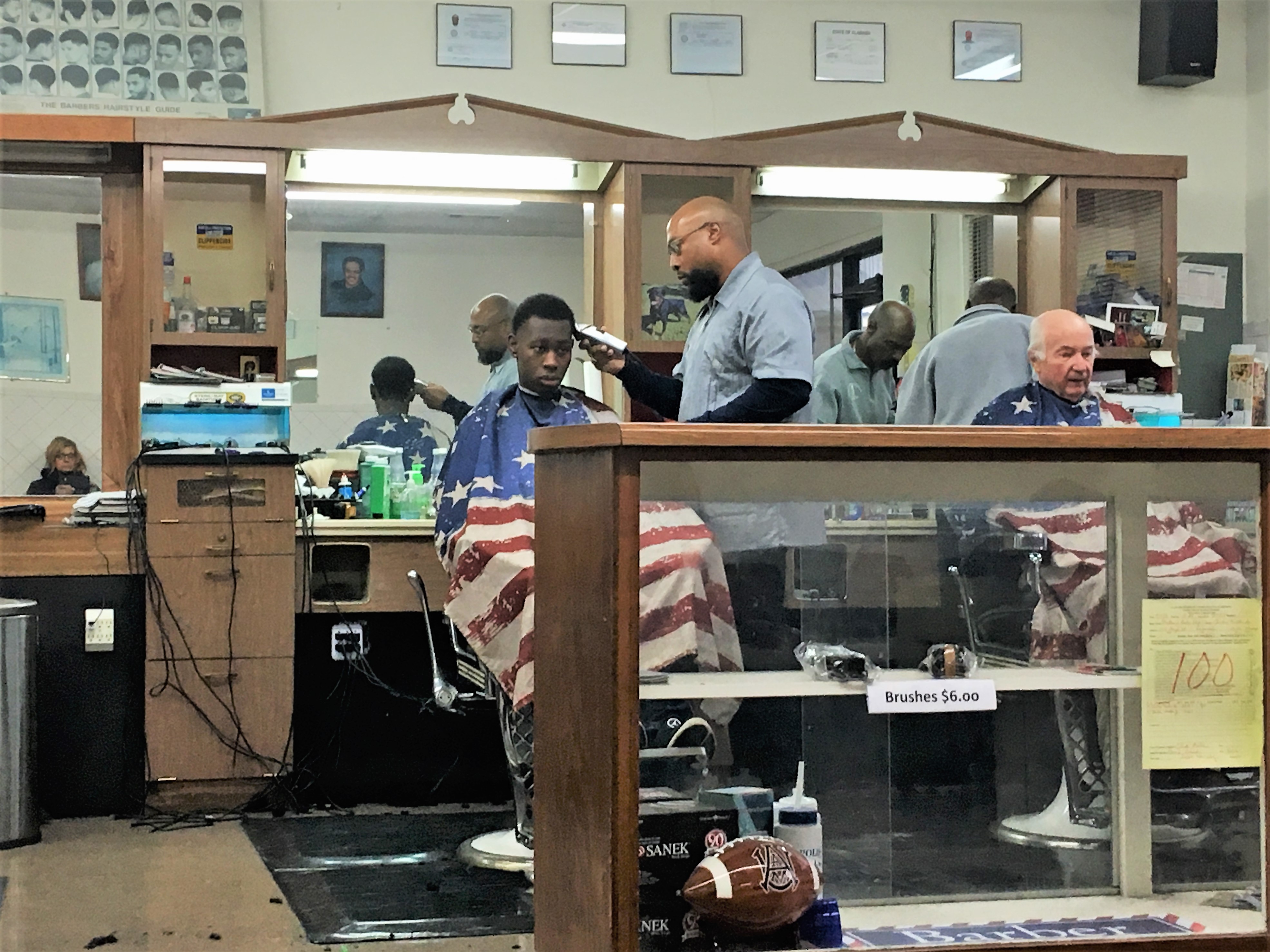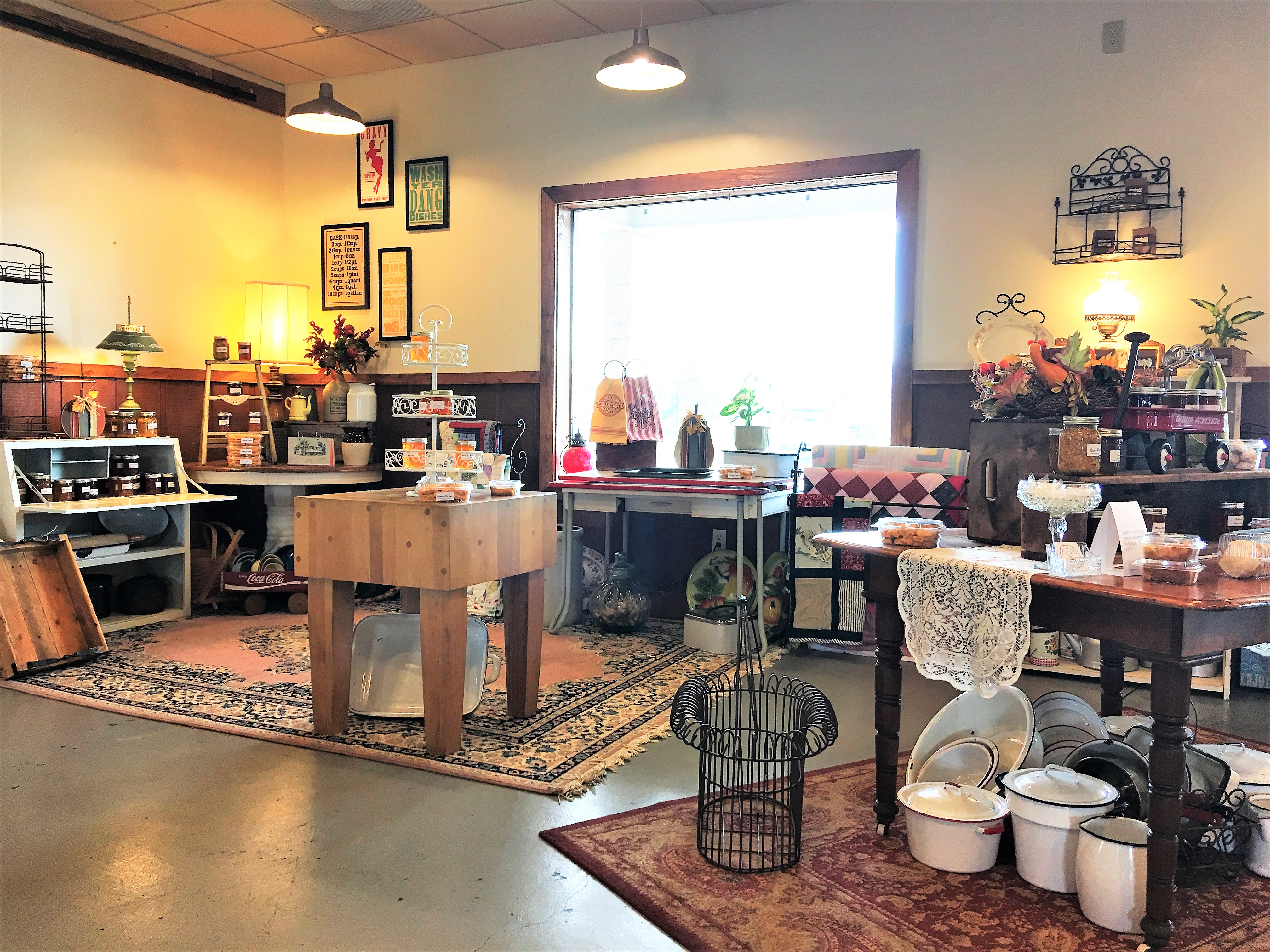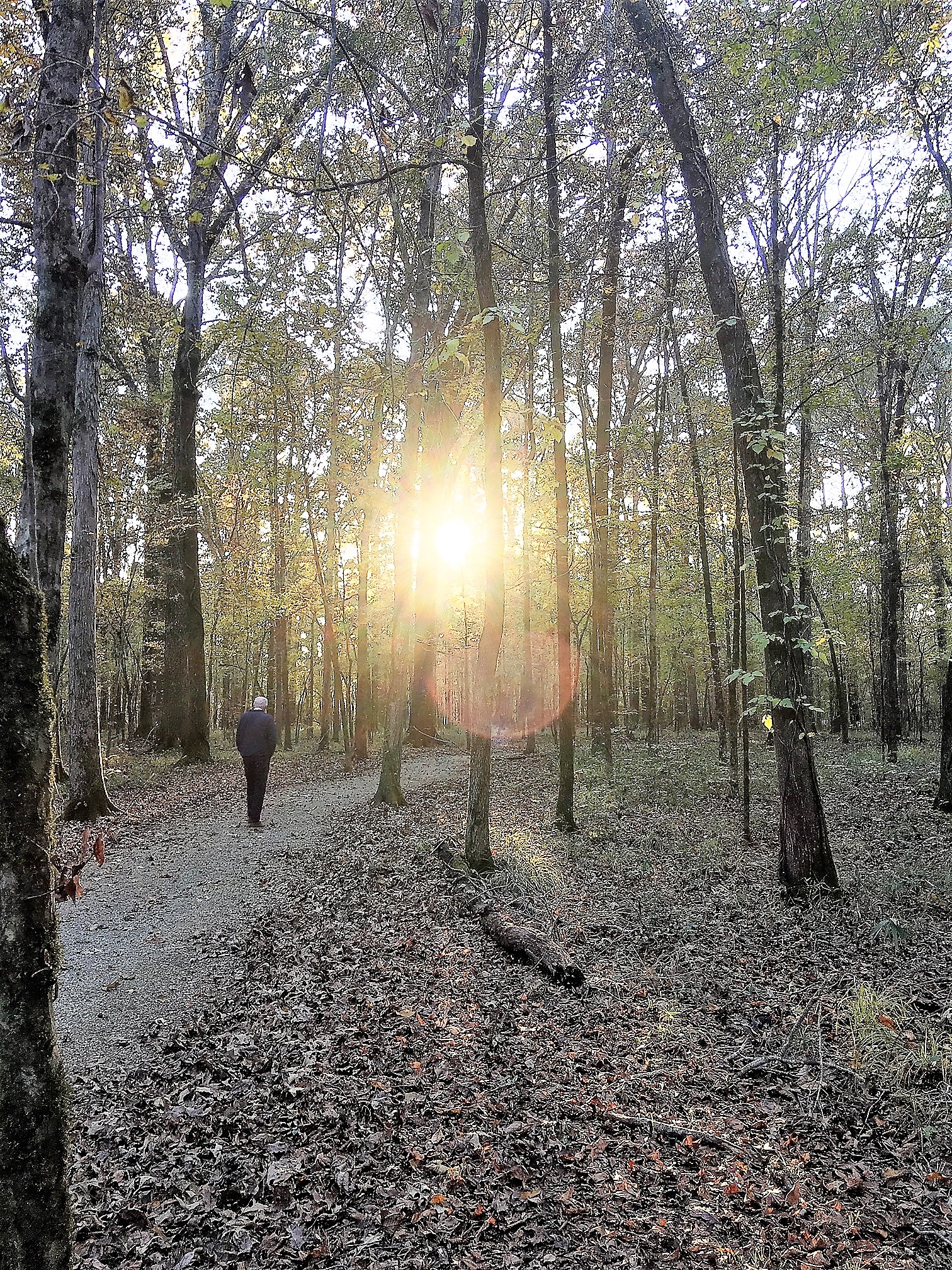It turned out that Ian had been harbouring a secret desire to travel on a Greyhound bus, and he thought that our journey from New Orleans to Demopolis, where we had left Carina, presented an opportunity. No buses or trains go to Demopolis, but that didn’t deter him. We could take the bus to Mobile, and then hire a car.
As it happened, the Greyhound bus left New Orleans at 8 o’clock in the morning, which might have impaired our enjoyment of the night before. But there was a Megabus at 11.30, a much more congenial departure time. He booked online, with an air of self-satisfaction, before we left home. The total fare, for us both, for a two-hour bus journey, came to $12.50.
I related this to our friend Jacks. She regarded me with consternation and then burst out laughing. Other young-ish friends reacted similarly, although my attempts to find out what exactly was the problem with Megabus were unsuccessful.
I was impressed by the fact that Megabus had a meeter- and- greeter at the bus station. But his role wasn’t confined to meeting and greeting. He eyed my bag with suspicion, and took it away to be weighed. Ian’s bag, by definition, weighed several kilos less, but I was only half a pound over the 50lb limit, so I was let off with a warning.
It was true that we didn’t quite fit the Megabus demographic, being the only people on the bus over the age of 35. But the seats, although hard, had plenty of leg-room, and there was free WiFi, which is more than you can say for the Transpennine Express.
I didn’t use the WiFi much though. The bus was a double-decker and our seats were upstairs, so we had a good view as we crossed Lake Ponchartrain and the bayous as we passed from Louisiana through Mississippi and finally into Alabama.
The bus stop at Mobile was a bit of a surprise. We’d imagined that the bus would stop in a bus station, and that there would be toilet facilities and possibly even a café where we could get some lunch before picking up the car. But it was just a bus stop on the freeway, and we regretted not having used the ‘facilities’ on the bus.
We took an Uber to the Enterprise car hire office, only to find a hand-written note on the door, ‘closed till 2.30’. It was only 1.45 and there was nowhere to sit and no restaurants or shops in sight.
A mechanic came out from the shed behind the office, bringing me a chair, and explaining that there had been a security breach with Enterprise’s computer network, and all branches had been told to shut down till 2.30 while it was sorted out. So we had to wait, but eventually we were on our way north and eventually, we ate lunch, somewhere in the rolling hills of northern Alabama.
Ian thought he was on a roll after his success with Megabus, and had suggested the Econo-Lodge in Demopolis as a suitable overnight stay. But he quickly realized he was pushing his luck, and we had a comfortable night at the Best Western Plus instead.
The next day we went to Demopolis Yacht Basin to have Carina put back on the water.
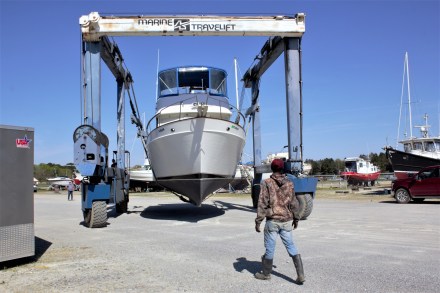
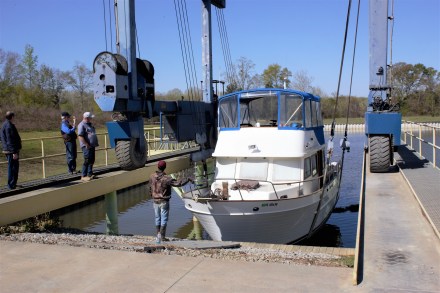
Once this was done, we crossed the river to Kingfisher Marina where we were going to spend a few days sorting the boat out before starting the 200-mile journey down the Tombigbee and Mobile Rivers.
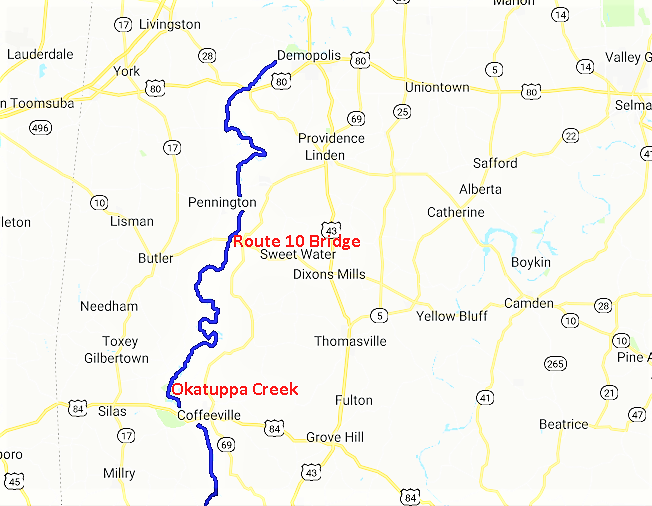
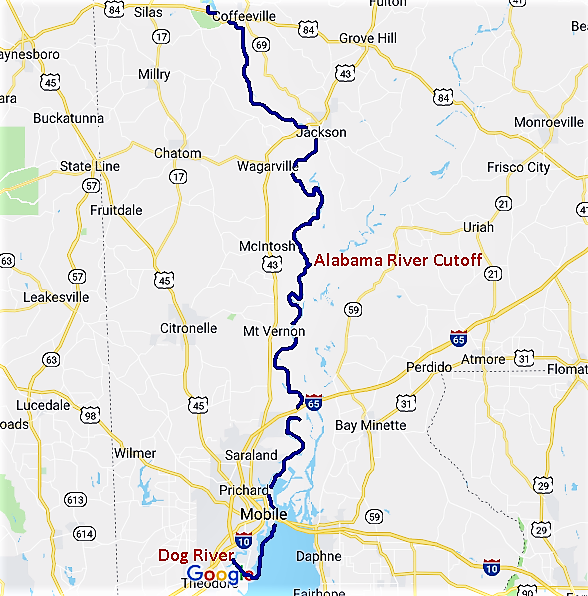
After the rodent experience in Illinois, I felt some trepidation about getting back on the boat. But the mousetraps we’d left were untouched. There was a bit of mould here and there, but that was easily dealt with. The weather was fine and dry, so I was able to air the bedlinen and we didn’t need any more nights in the hotel. We celebrated our return to the boat with dinner at the Red Barn Restaurant, reputedly Demopolis’ best, and where we’d had a good meal on our last visit.
Our last trip had been punctuated with disasters of varying severity and expense, so we were dismayed when Ian noticed fluid leaking from a hose on the steering column. It was all a bit too déjà vu. His initial attempts to remove the leaking hose proved futile, and we thought we were in for another repair bill. But he made a renewed effort the next morning, this time successfully. We had to wait till Monday to get a new hose made at a car repair shop, but it didn’t really matter. We needed the time to provision the boat and check everything was functioning, because we’d be anchoring out for 3 nights in remote areas before we got to a marina at Mobile .
It was grey and cool when we left the next morning. Fred, Kim, Trenella and their staff at the Yacht Basin had been kind and helpful to us and I was still grateful to Anna-Marie at Kingfisher for her uncompromising advice back in November, when the water in the Tombigbee had risen to flood levels and the amount of debris in the river would have made it a dangerous passage, and she’d told us not to go.
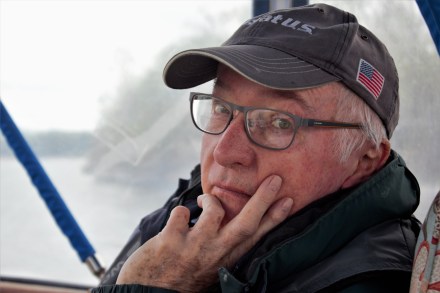
It had been the right call. Everything happens for the best. If our journey in the fall on the Tenn-Tom had been spoiled by cold and rain, once the first cloud had dissipated on our first day, we had clear, unbroken sunshine all the way to Mobile. Spring comes early in Alabama, and the trees which had worn their autumn golds in November were now showing the first new leaf of bright green.
It’s only about 100 miles as the crow flies from Demopolis to Mobile, but the river meanders and loops its way down to the delta. Sometimes the bends are quite sharp, and a large tow will appear from apparently nowhere, and quick avoiding action has to be taken.
There were only two locks between Demopolis and Mobile. The first one, Demopolis Lock, was just round the corner, and proved to be the first snag. We’d got up early to make the most of the day, but when Ian rang them to let them know we would like to pass through, the message came back that a large tow needed to go through first. And repairs were being done, and we wouldn’t get through till 11.30.

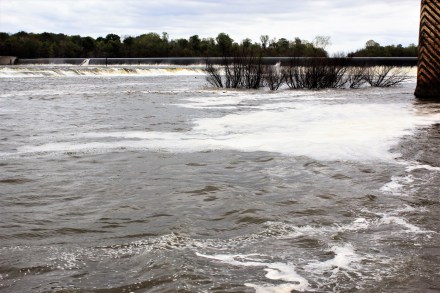
The delay getting through the lock meant that we wouldn’t get to our planned anchorage at Bashi Creek before dark, and we had to anchor instead by the shelter of the Route 10 bridge over the Tombigbee River. The important thing was keeping out of the way of the tows which pass through all night. We set two anchors and kept the cabin light as well as the anchor lights on. As darkness fell, Ian spotted an alligator looking for its dinner.

During the winter, the river level at Demopolis had risen to 80’, 40’ above normal. We could now see the evidence of this in the terraces of sand that had been deposited along the riverbanks.
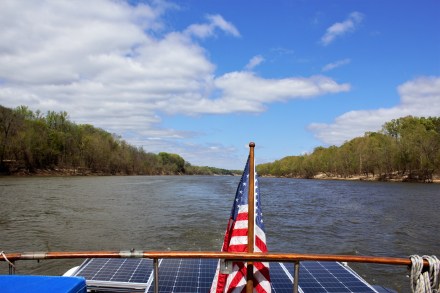
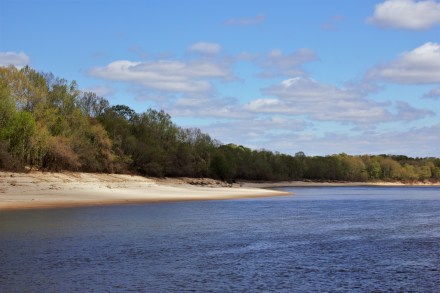

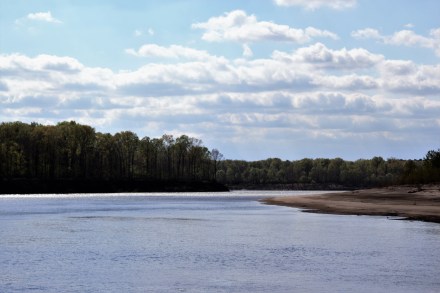
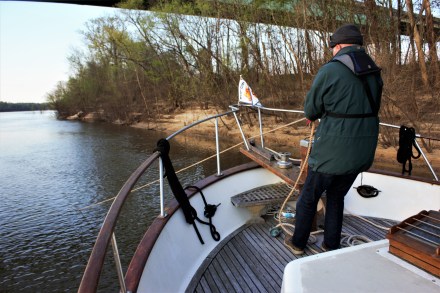

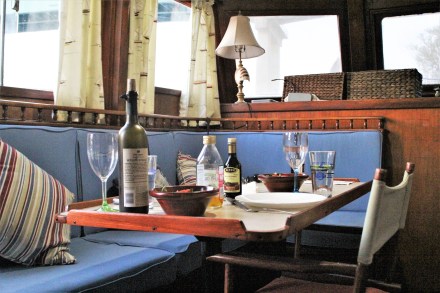
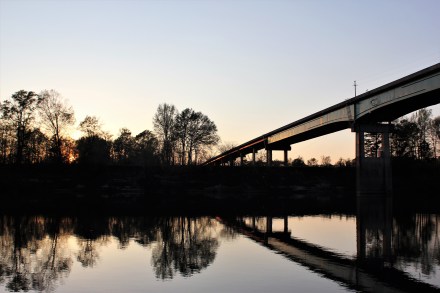
We anchored out each night, the second night at Okatuppa Creek in the Choctaw National Wildlife Refuge, and the third at the Alabama River Cut, where a short canal links the Tombigbee with the Alabama River. The only place we could have tied up was Bobby’s Fish Shack, but off-season it’s only open from Thursday to Sunday. Apart from one boat which left Demopolis at the same time as us, we didn’t see a single other pleasure craft. We passed through another lock at Coffeeville, but through no towns or settlements.


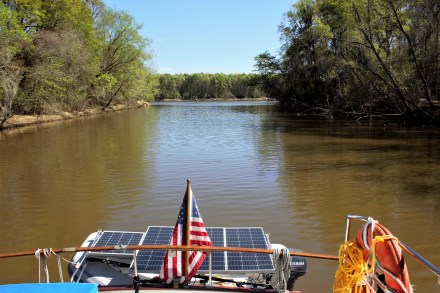
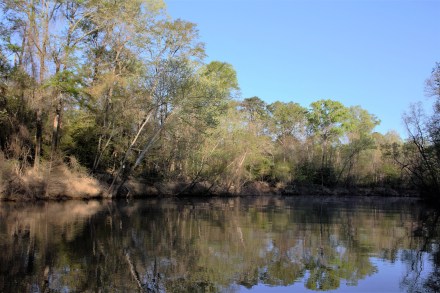
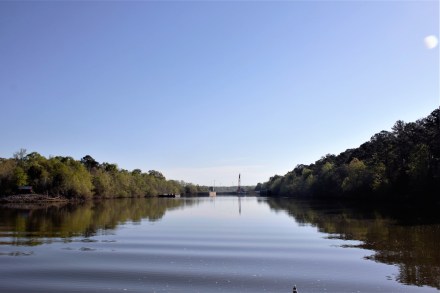

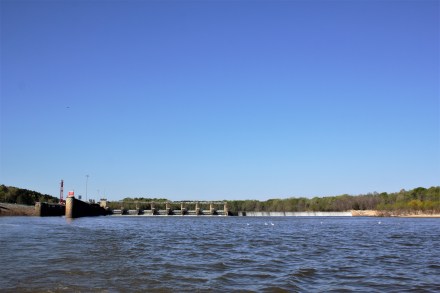
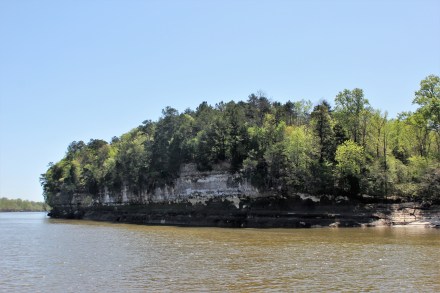

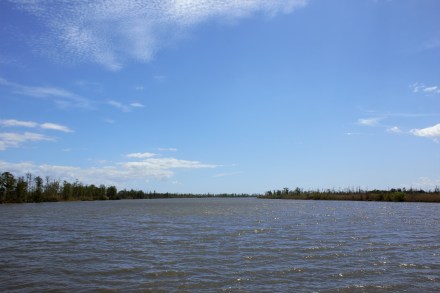
Suddenly we hit the Mobile Shipping Channel. We’d done the 200 miles in four days, which was a record for Carina, helped by the river current southwards to Mobile. Everywhere there were tows, barges and big ships. One of the ships hailed us from what seemed like half a mile away, to politely suggest that it might be better if we passed him on starboard, rather than on port, as he needed to come into the dock. As we passed him, he wished us a good day and a safe trip.

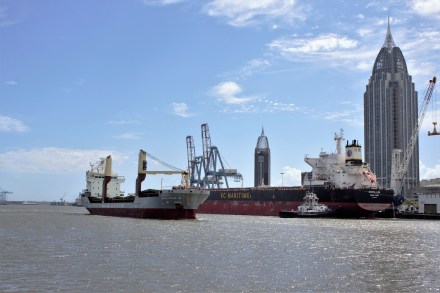

We tied up at the transient dock at Dog River Marina, 10 miles south of Mobile. It had been a long day and the shipping channel had been stressful, but it was good to have the rivers behind us. It was a bit late in the day and the marina staff had gone home, but Jim and Lynn, whom we’d met at Demopolis, were on the dock next to us and helped us tie up.
